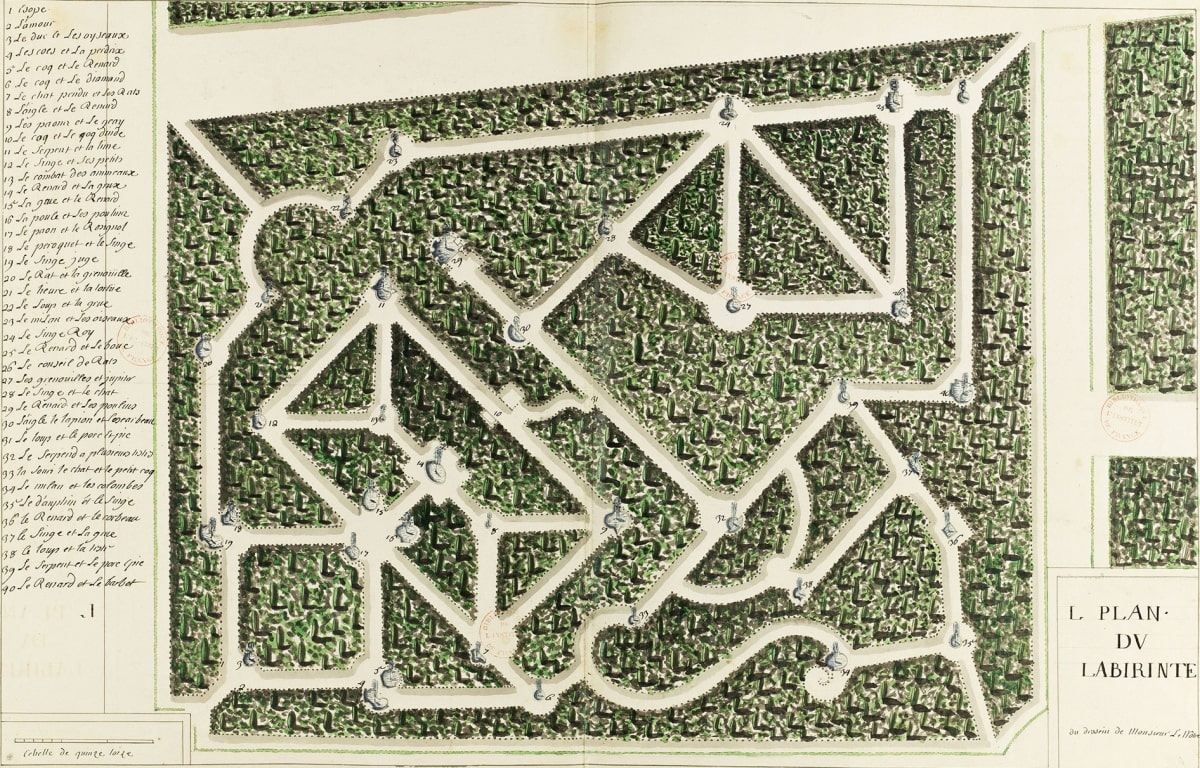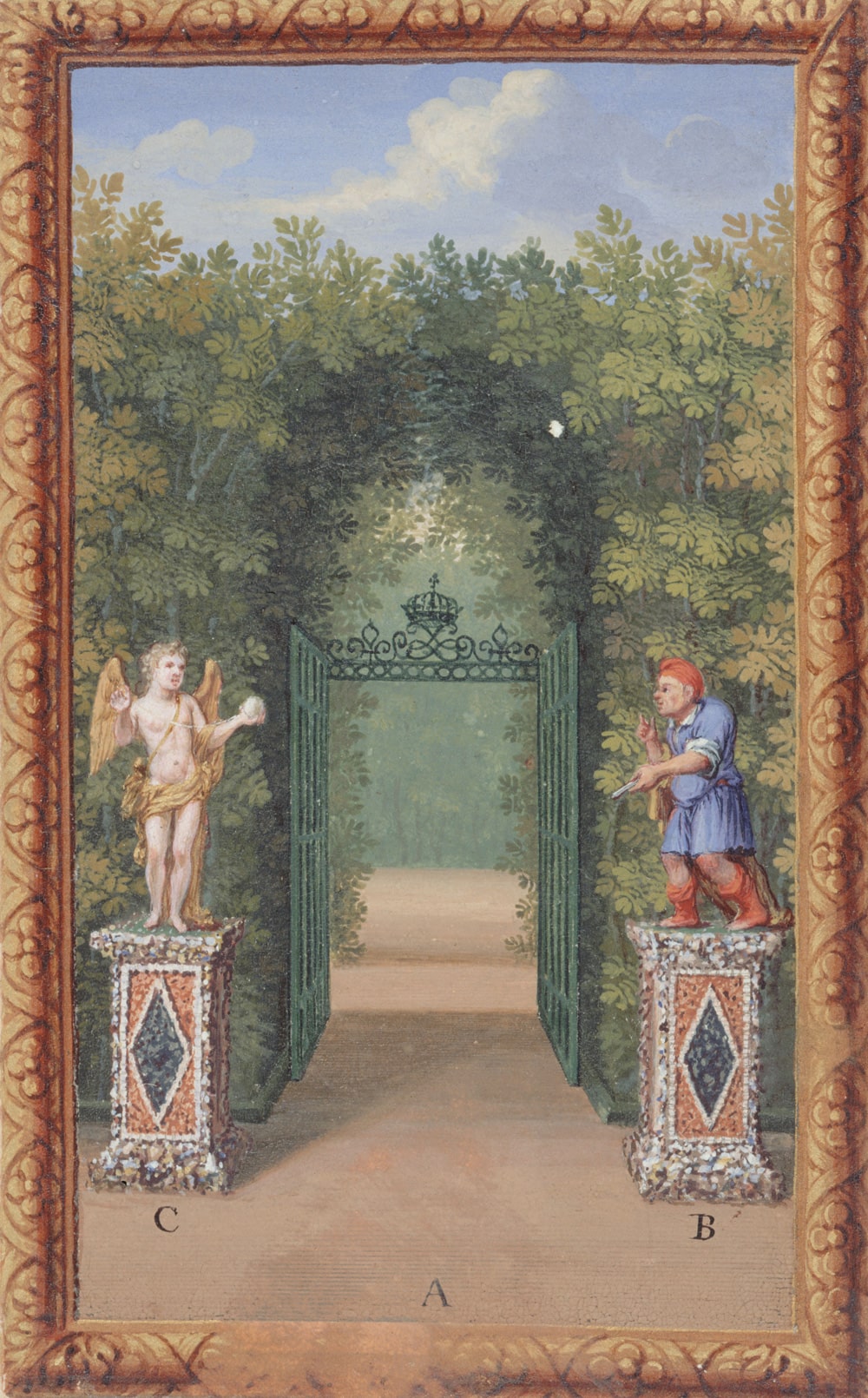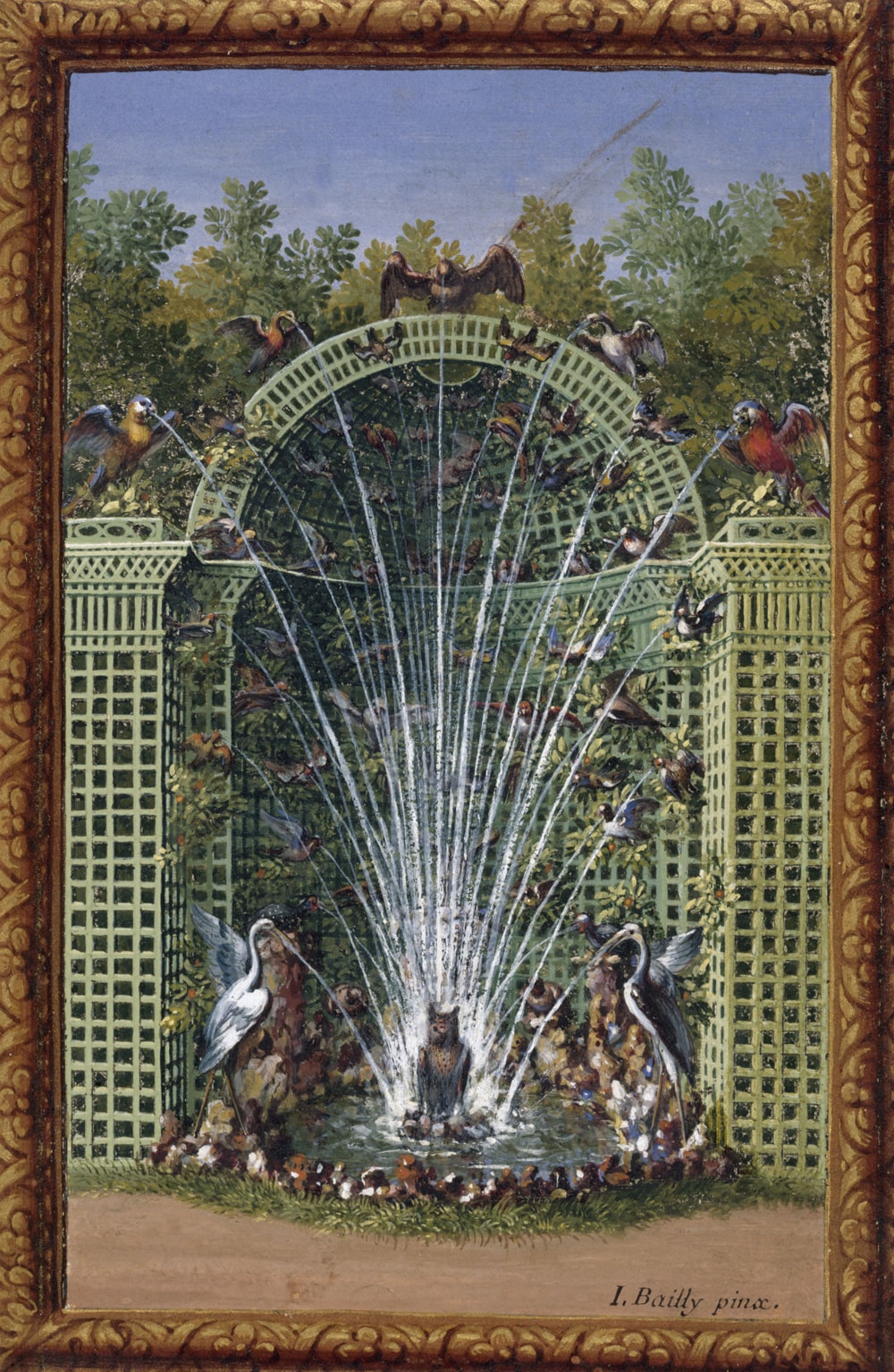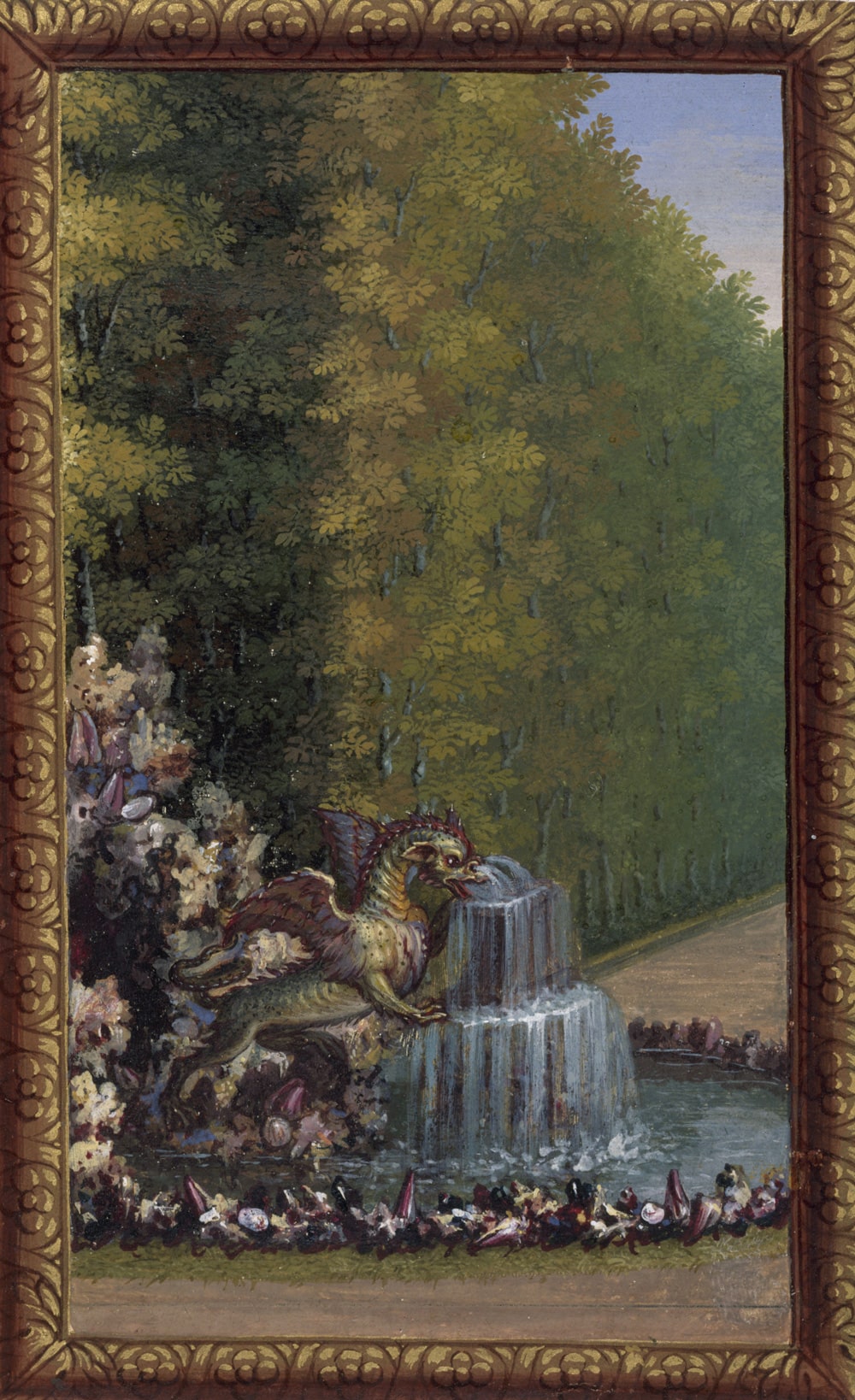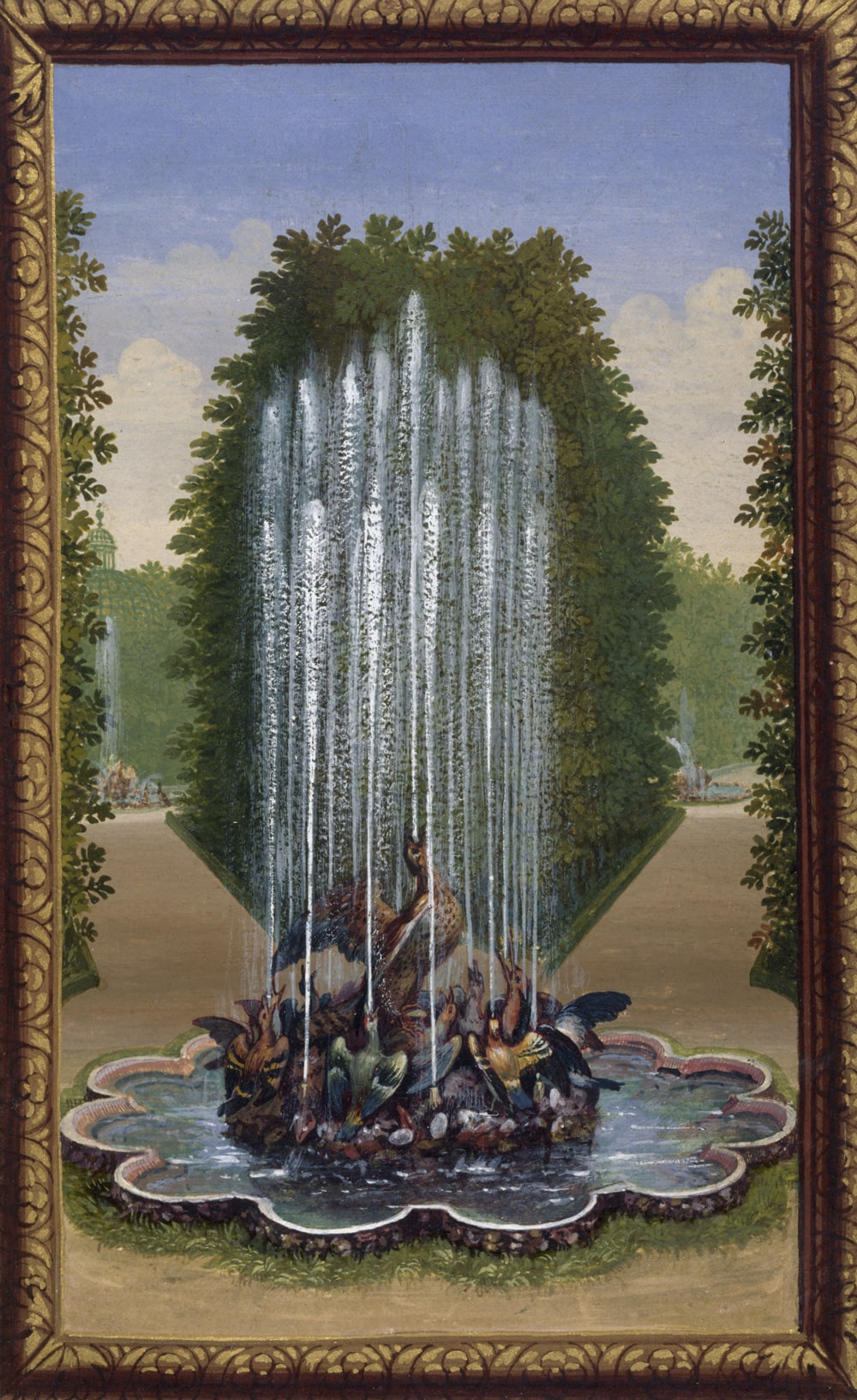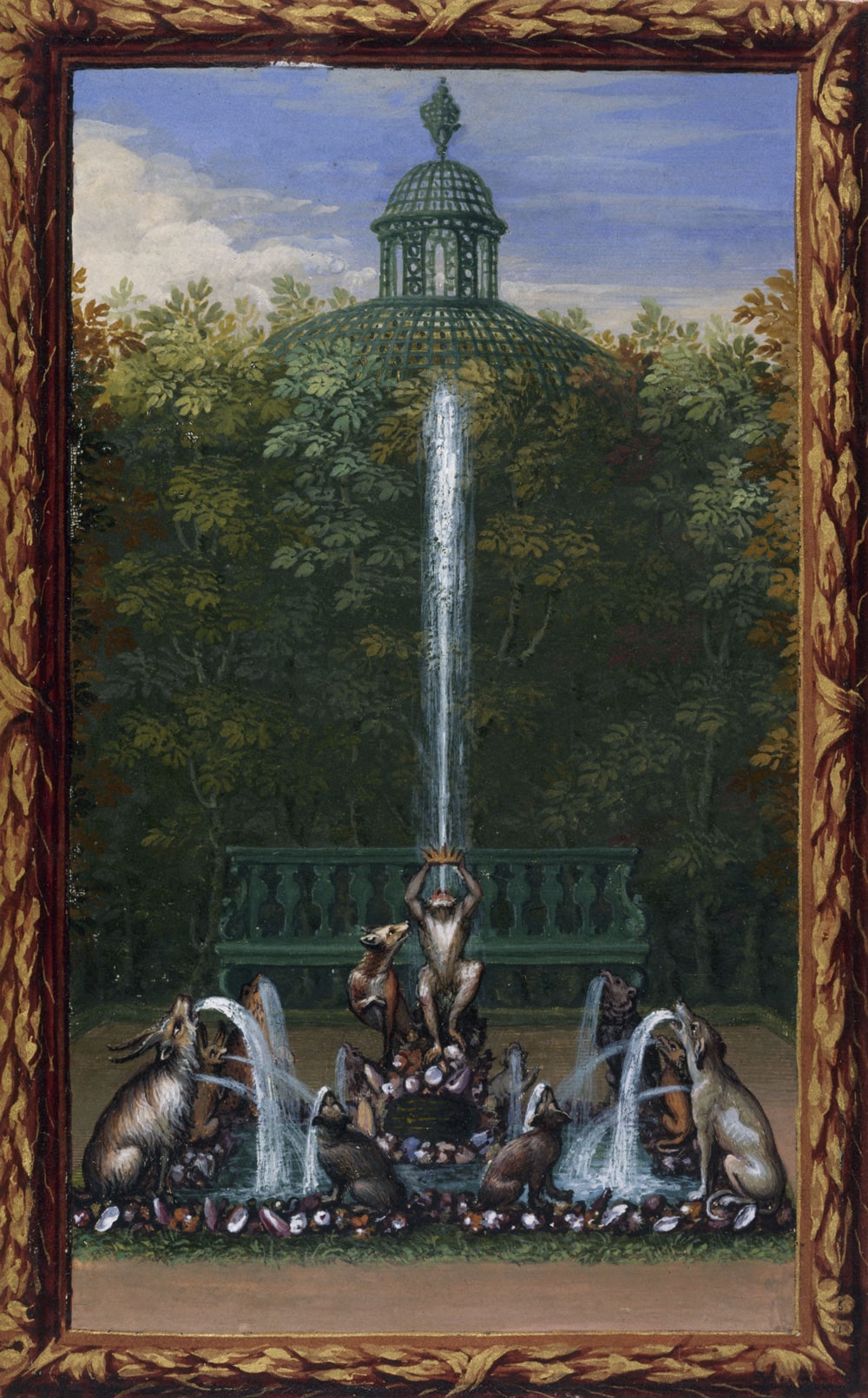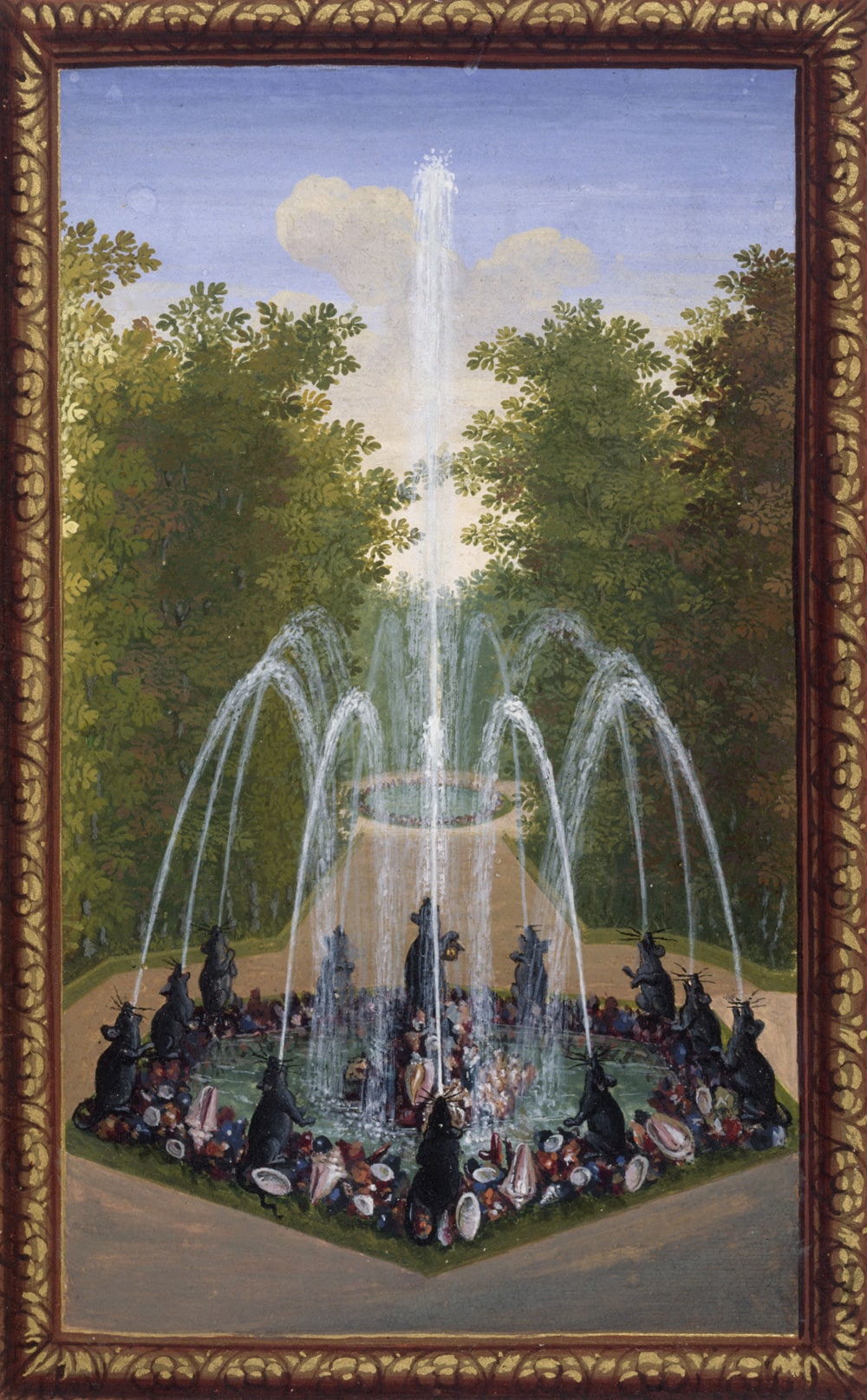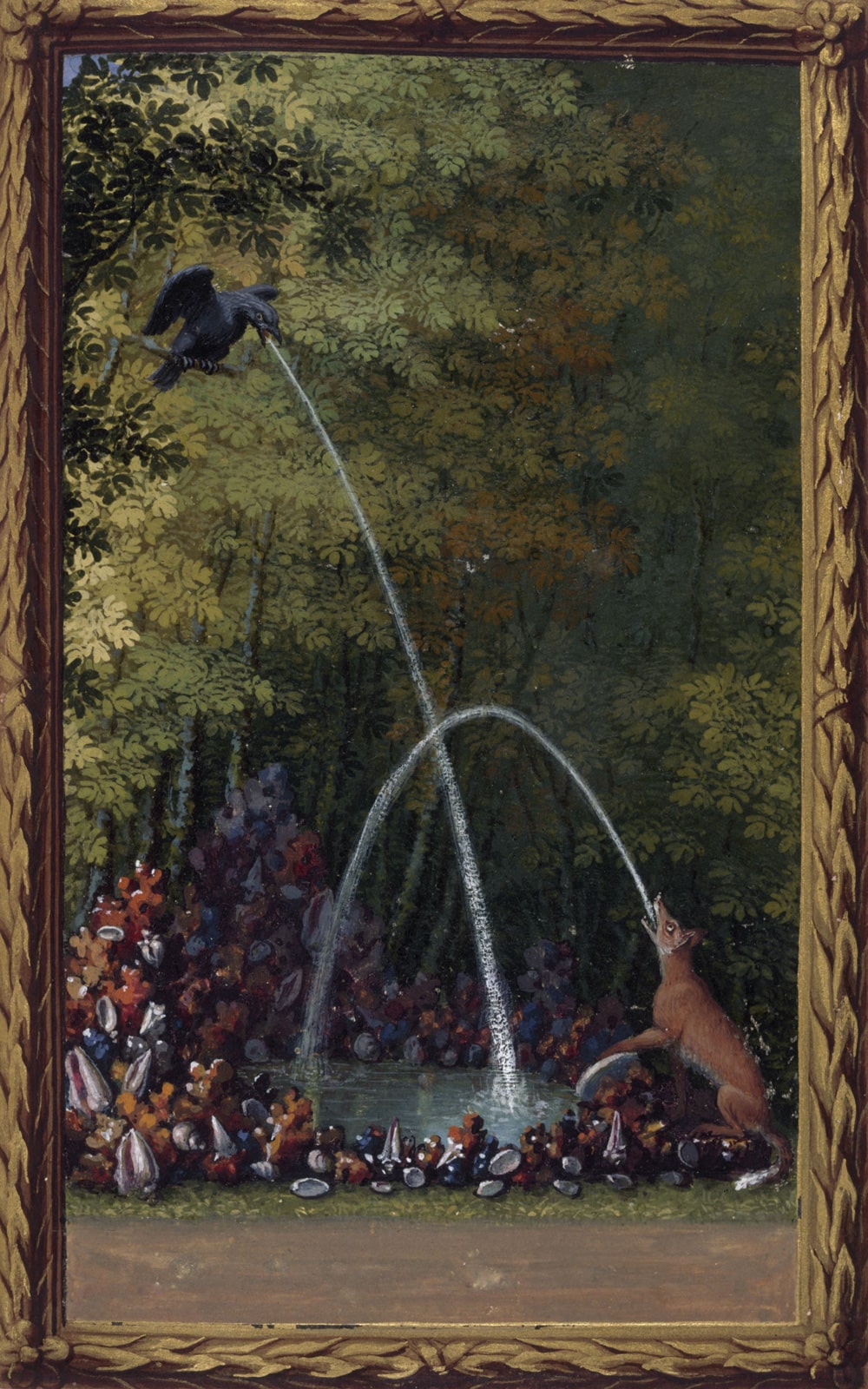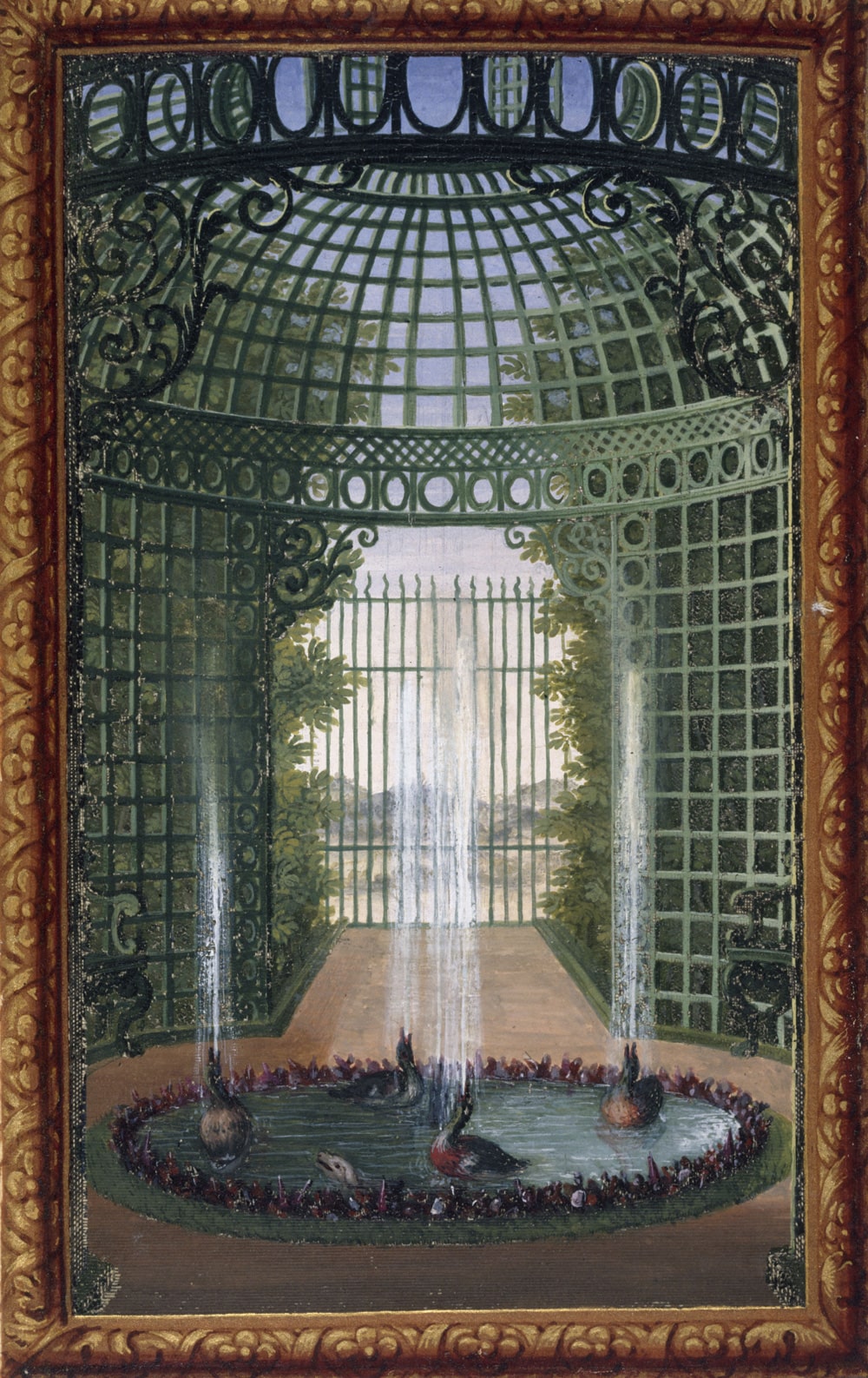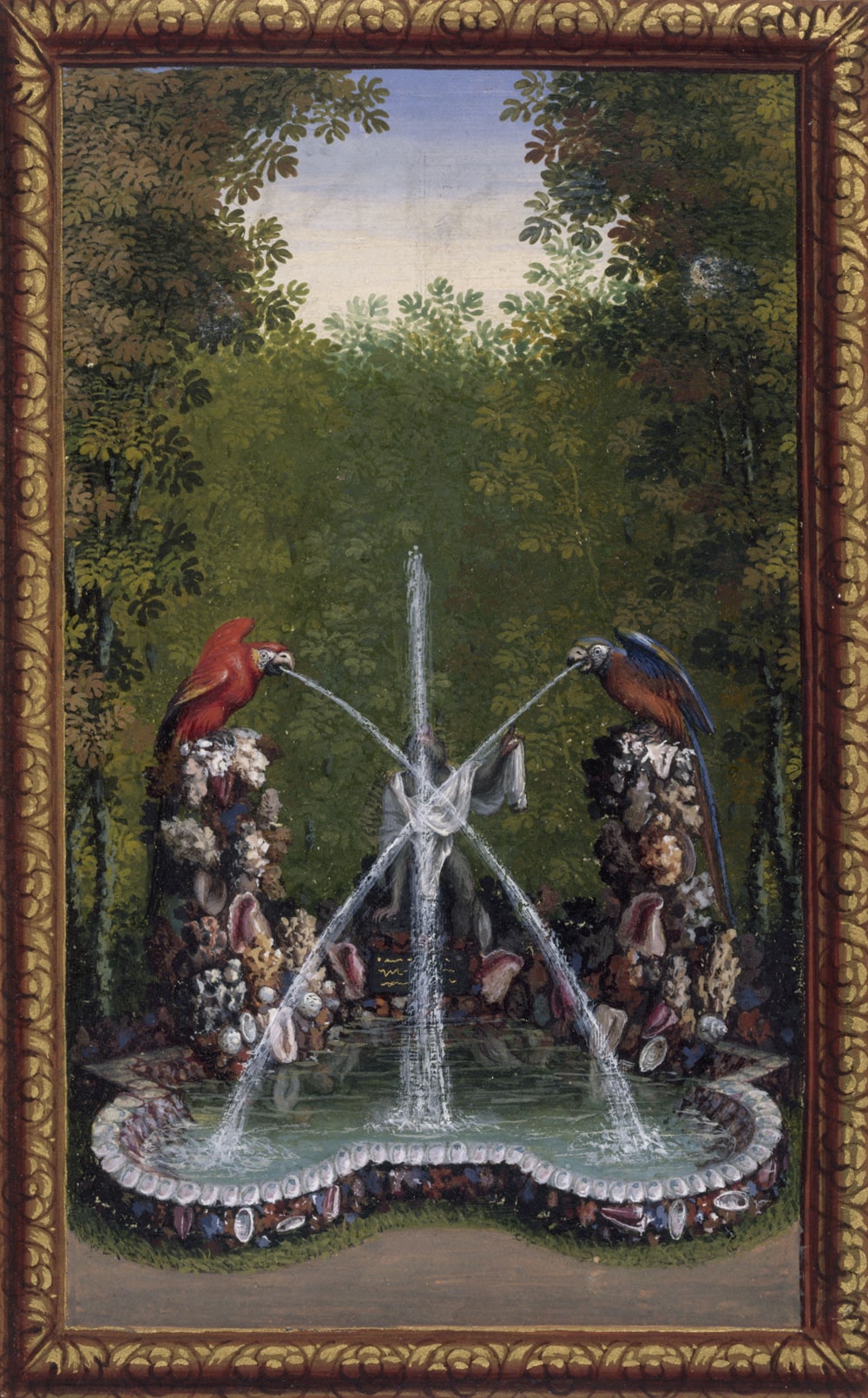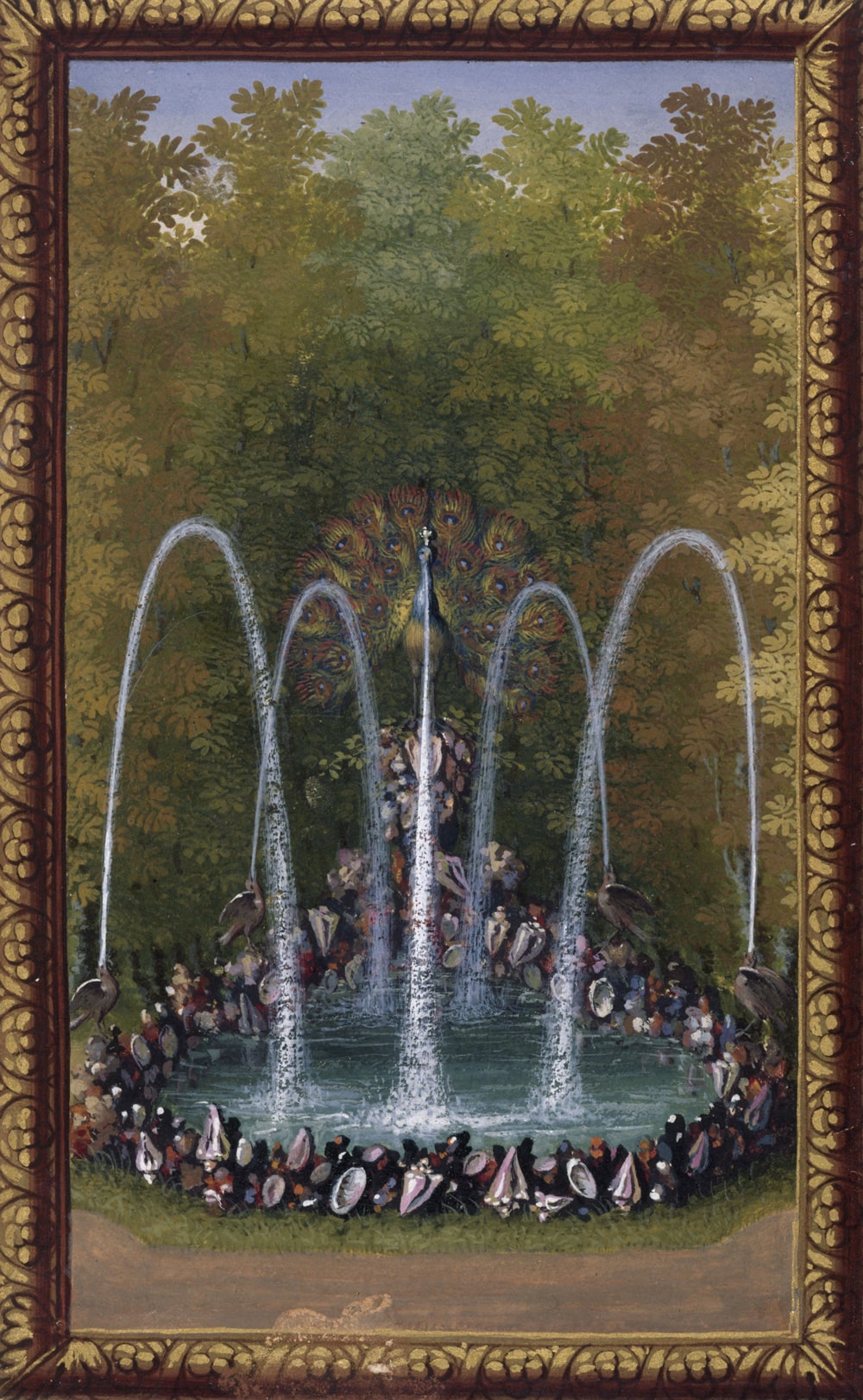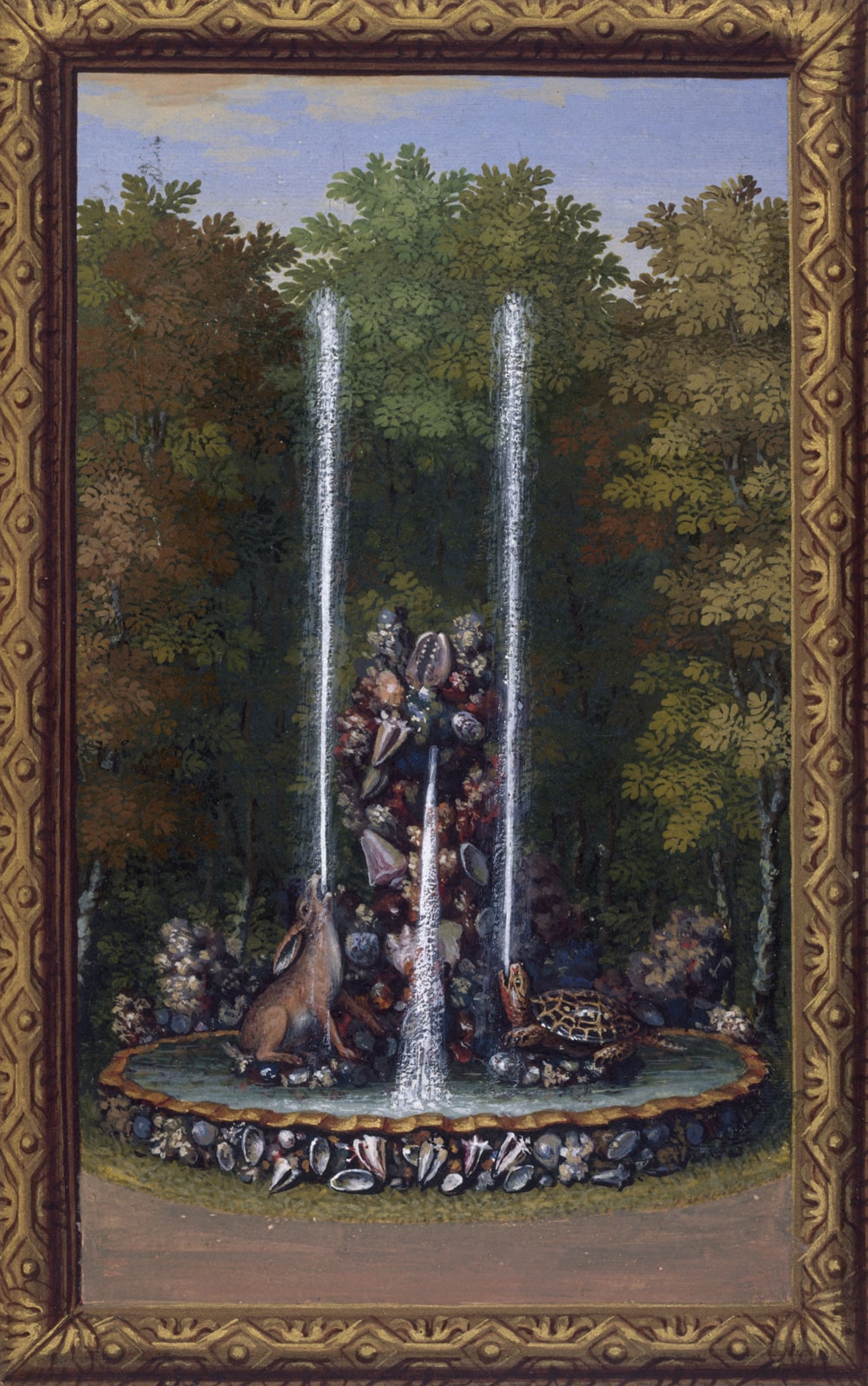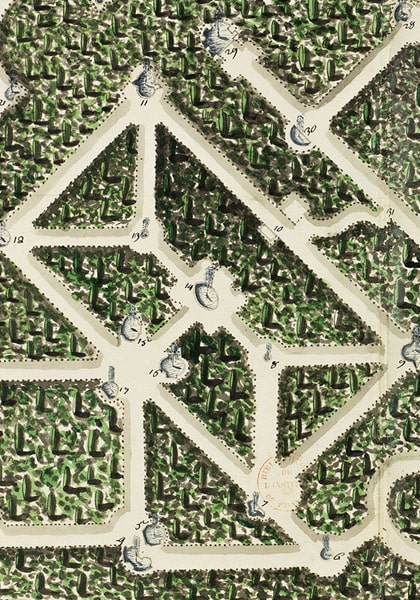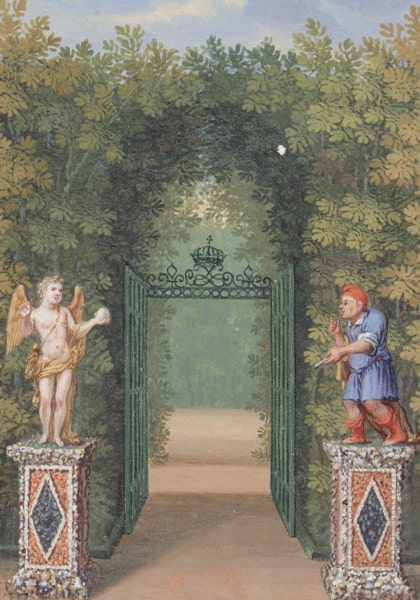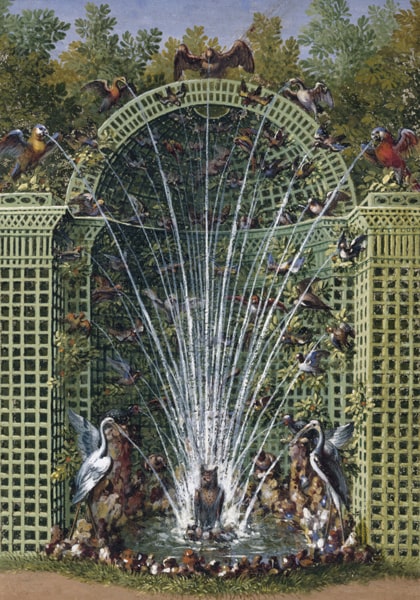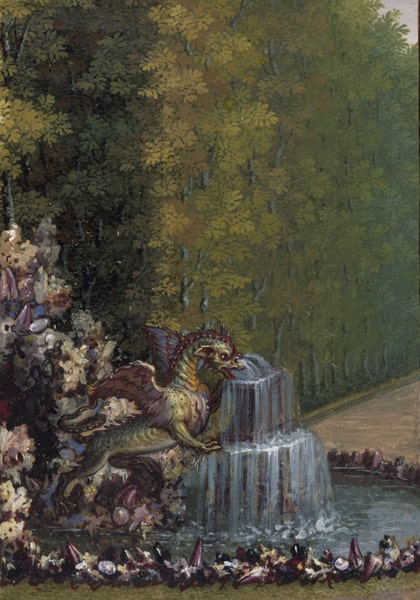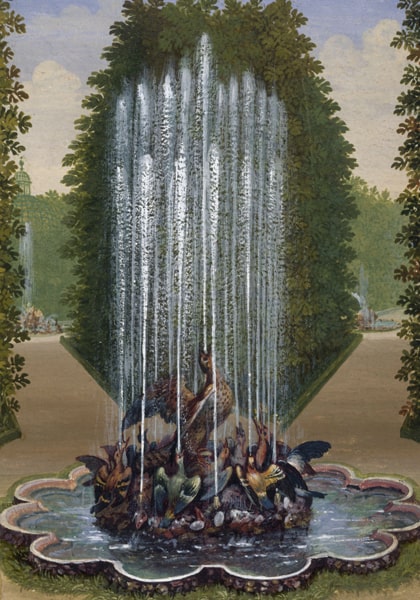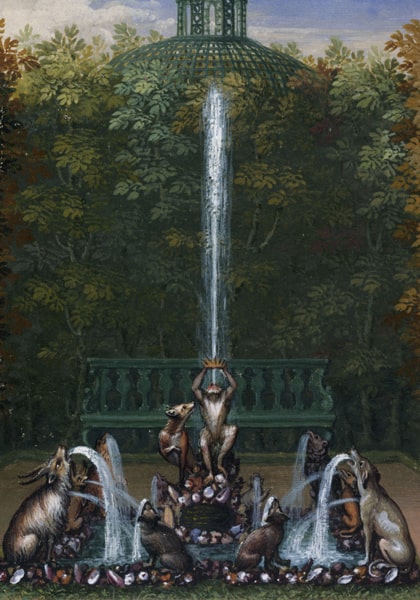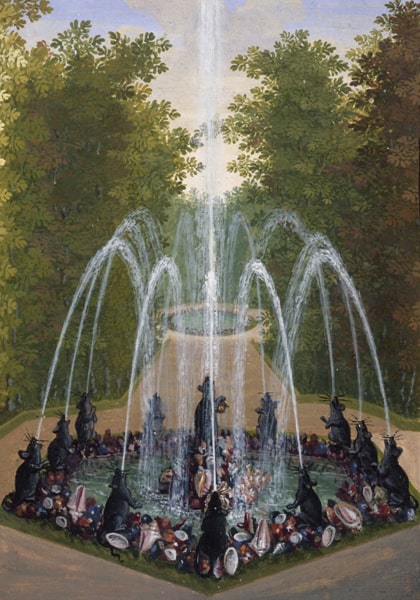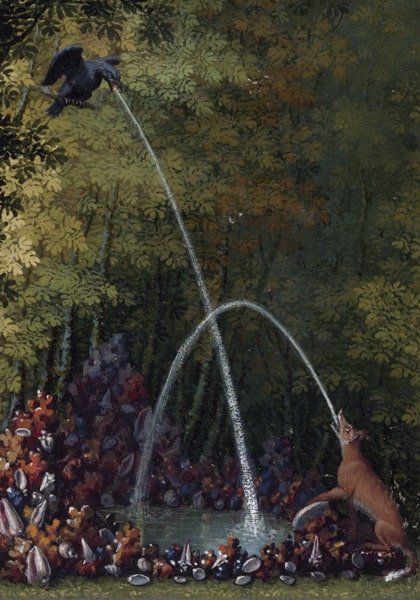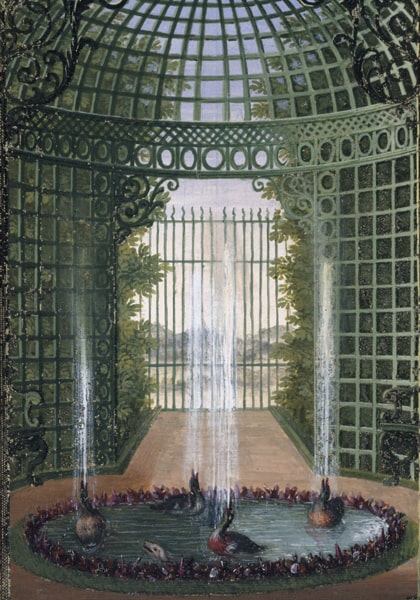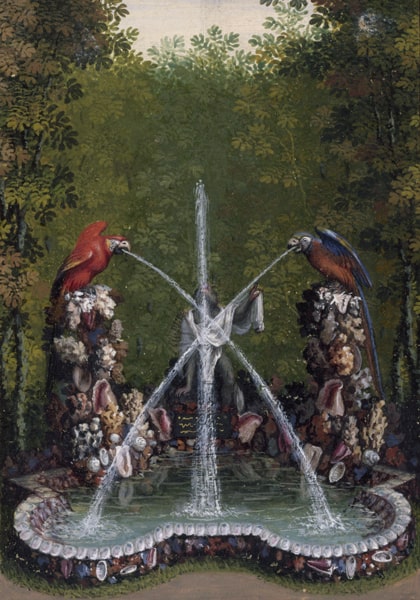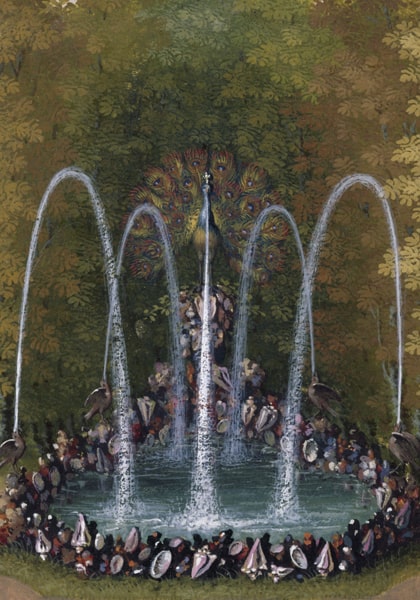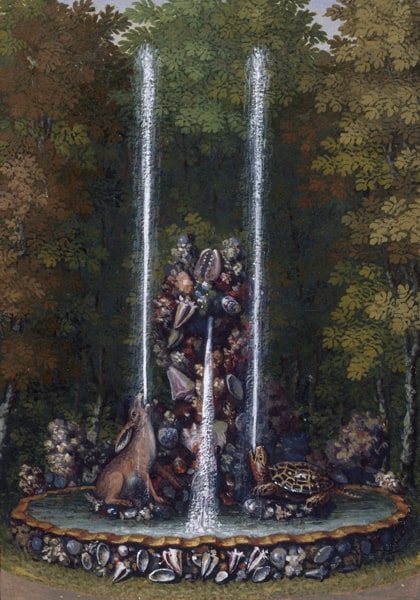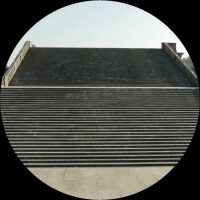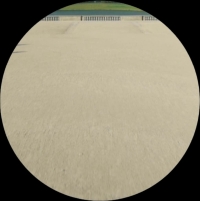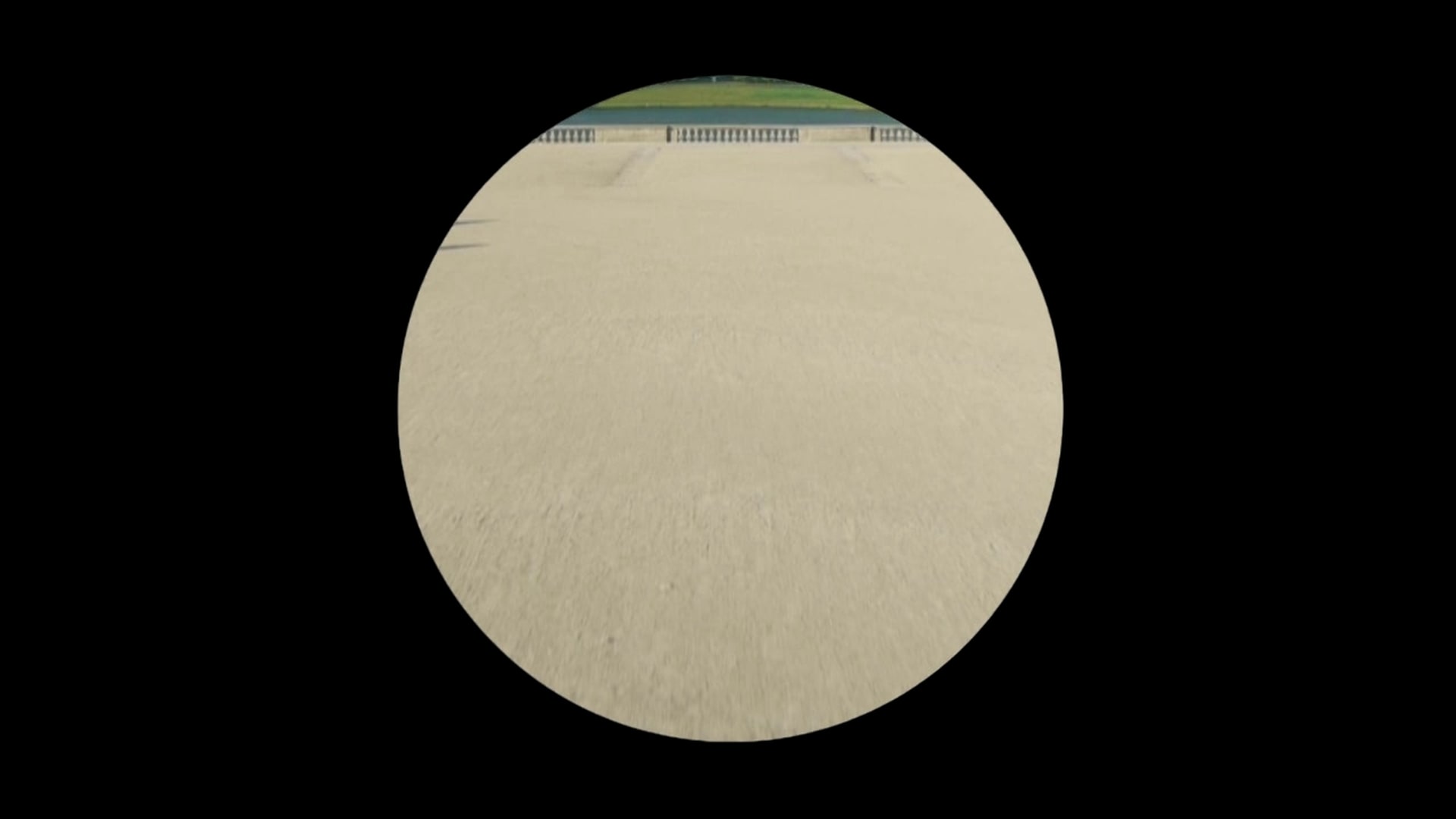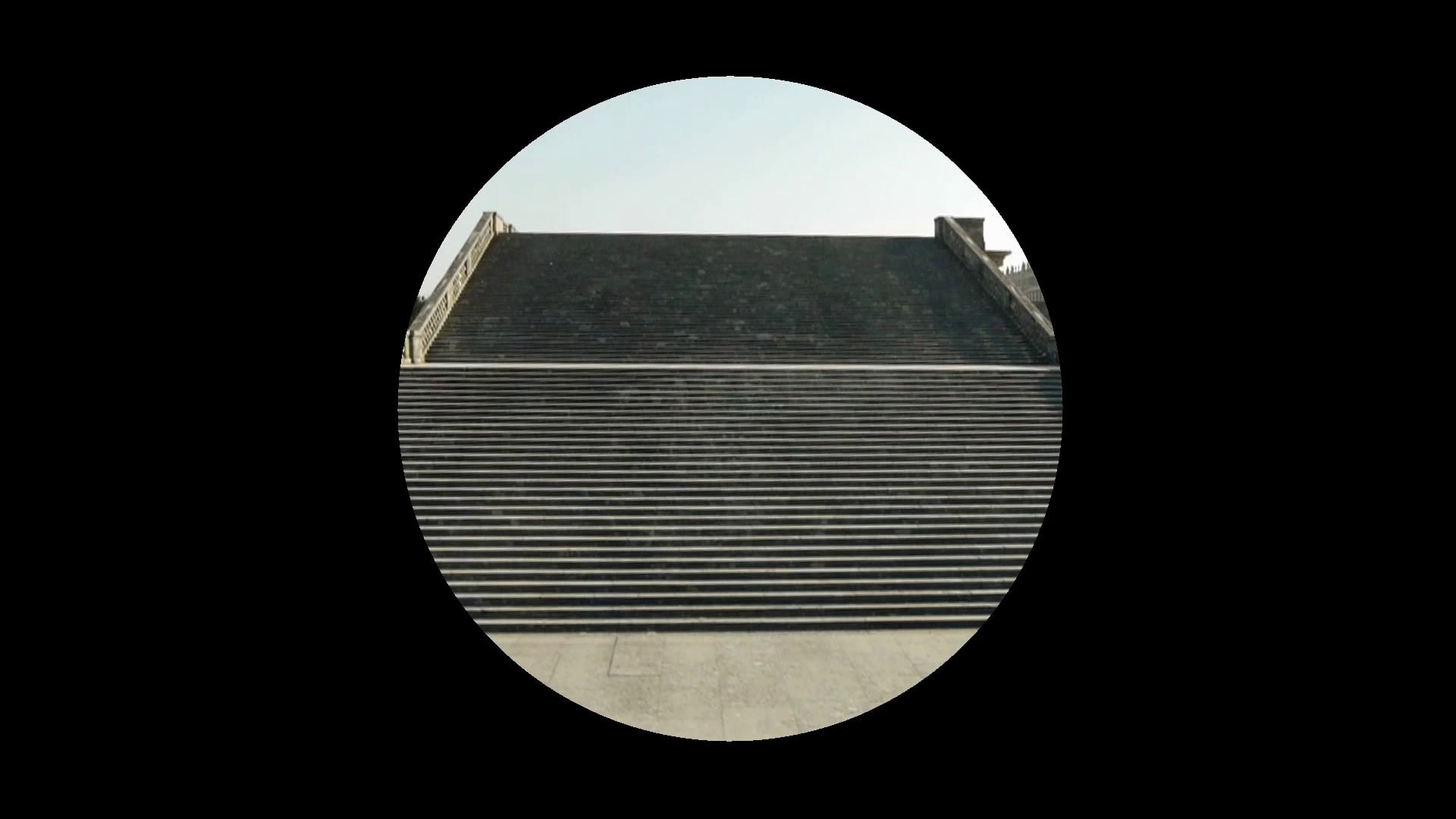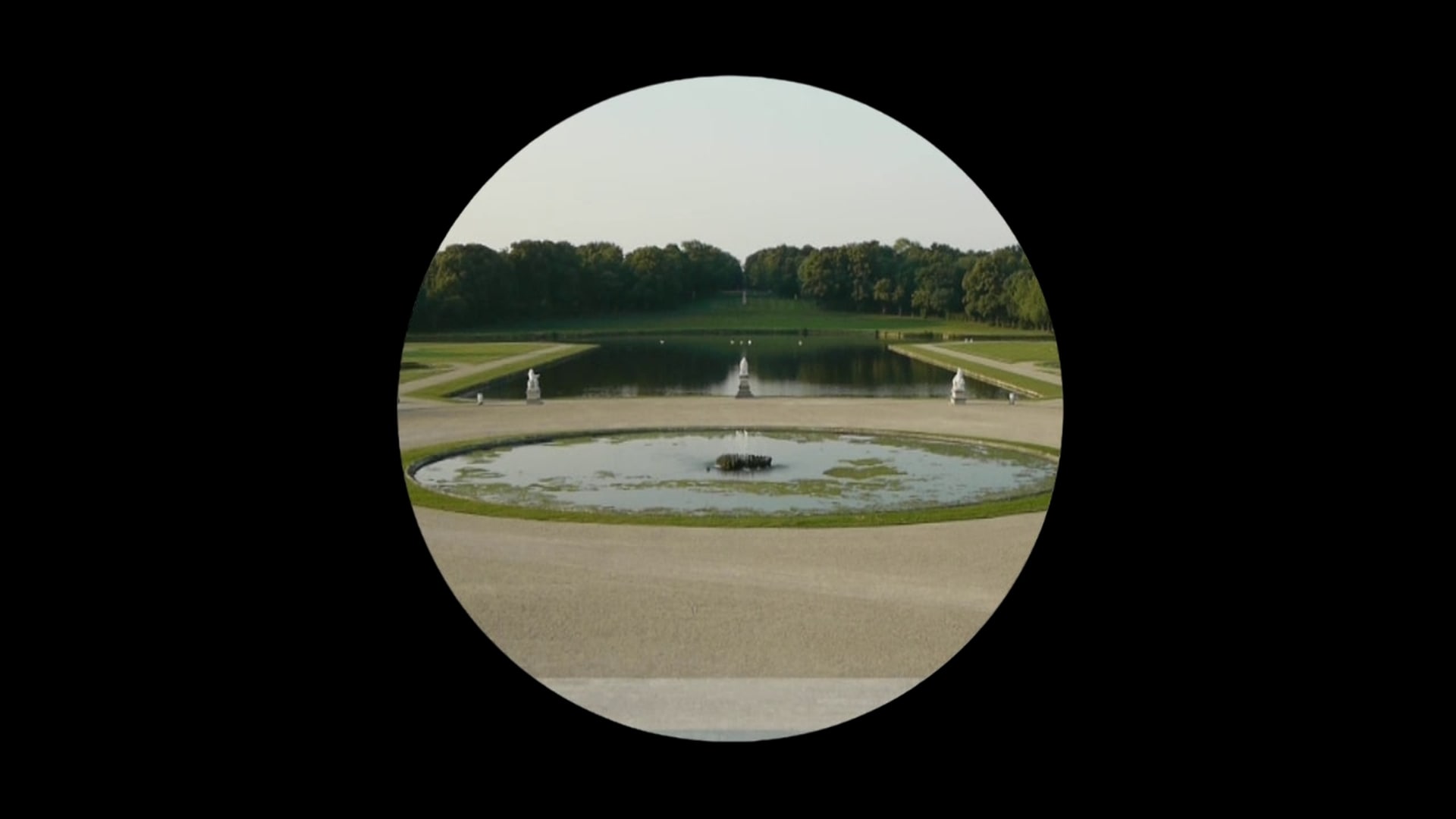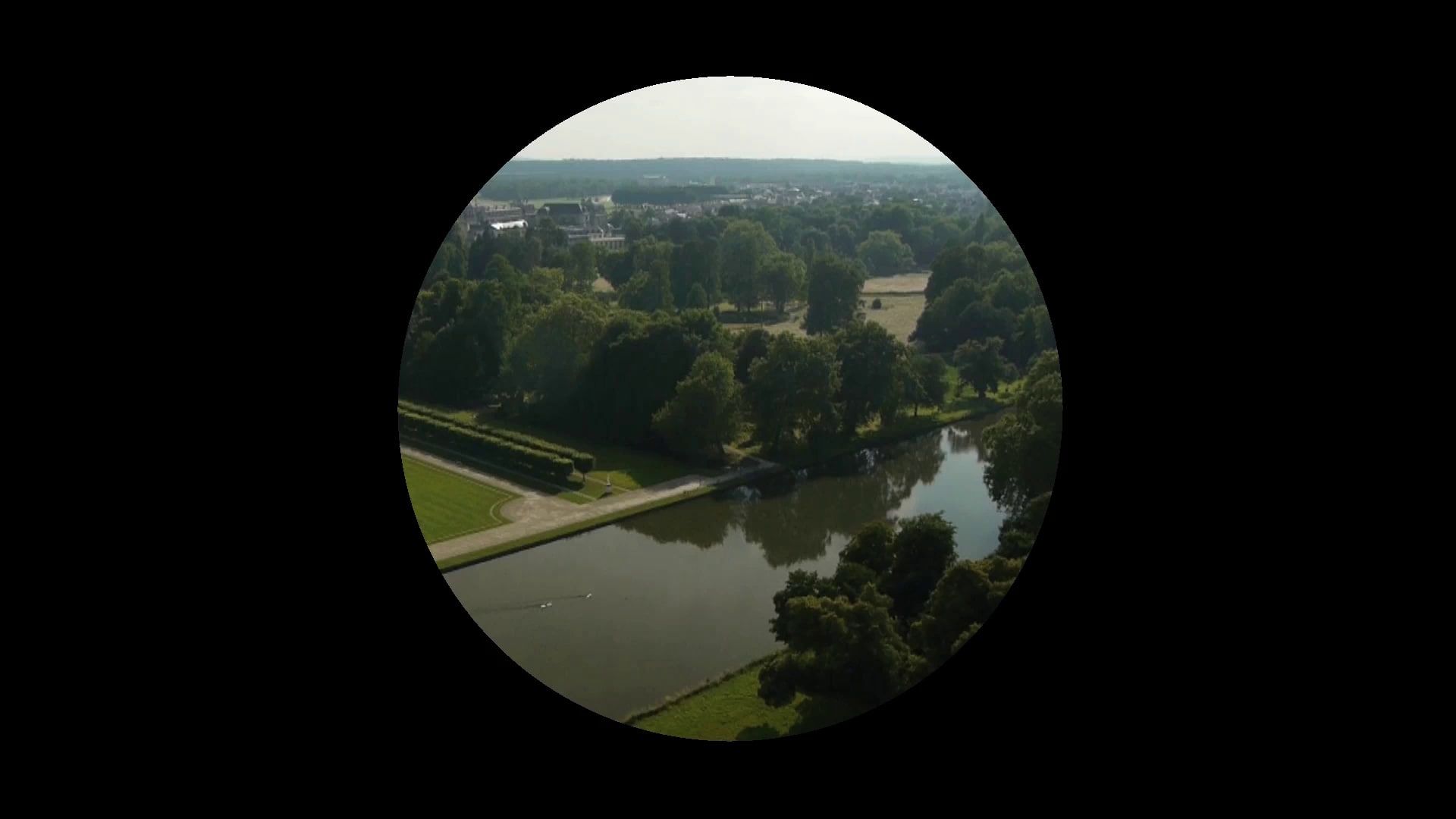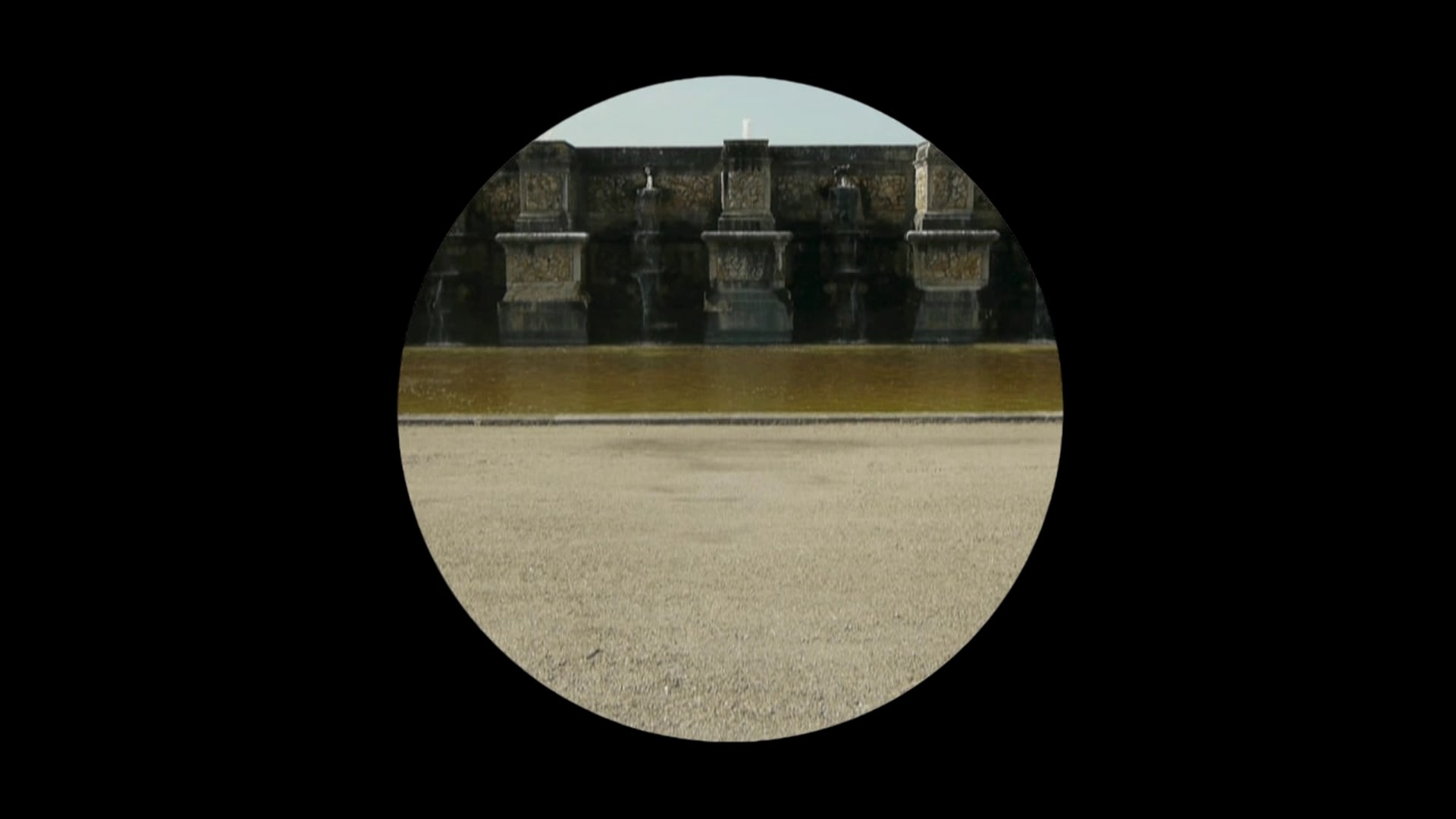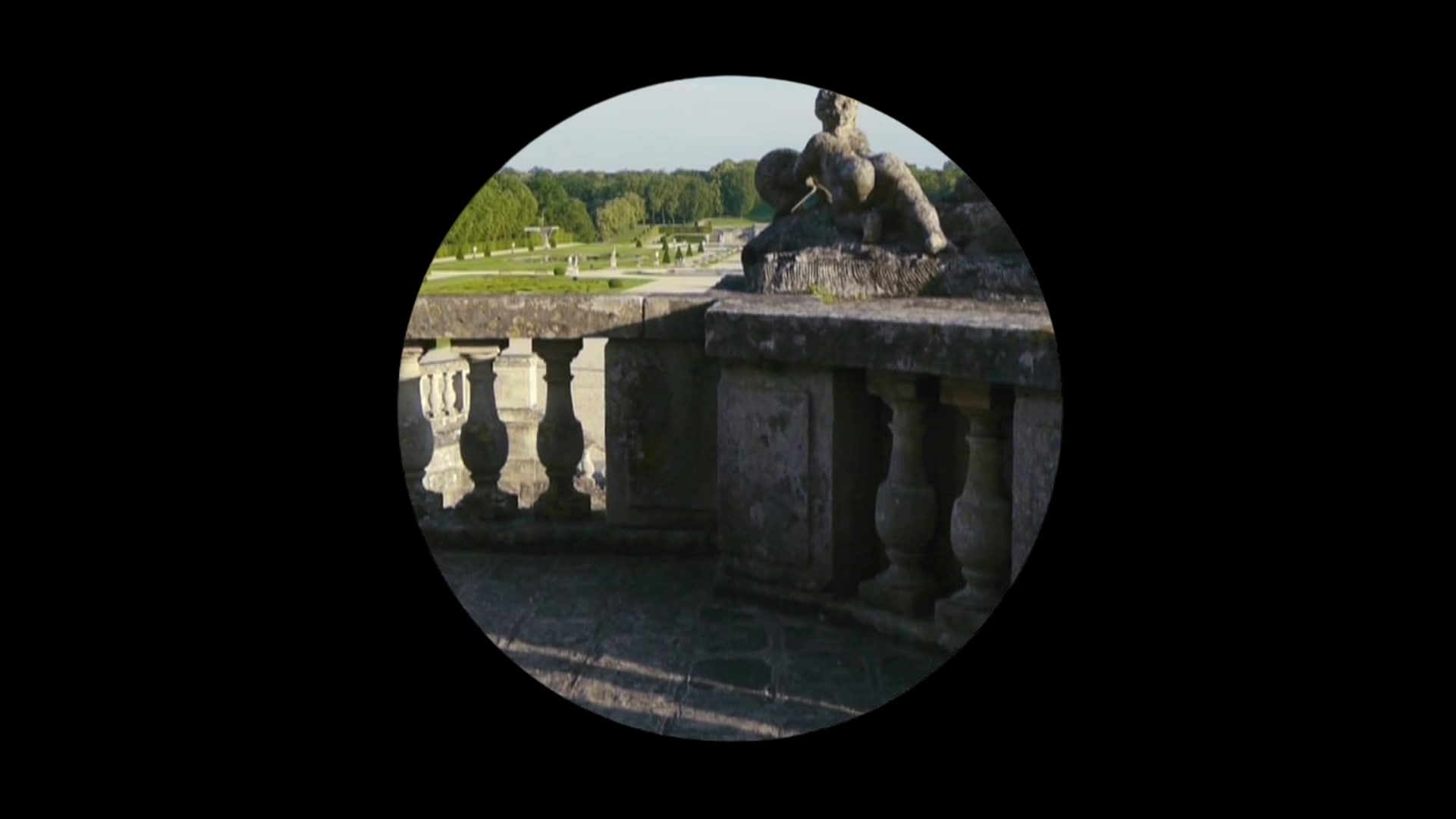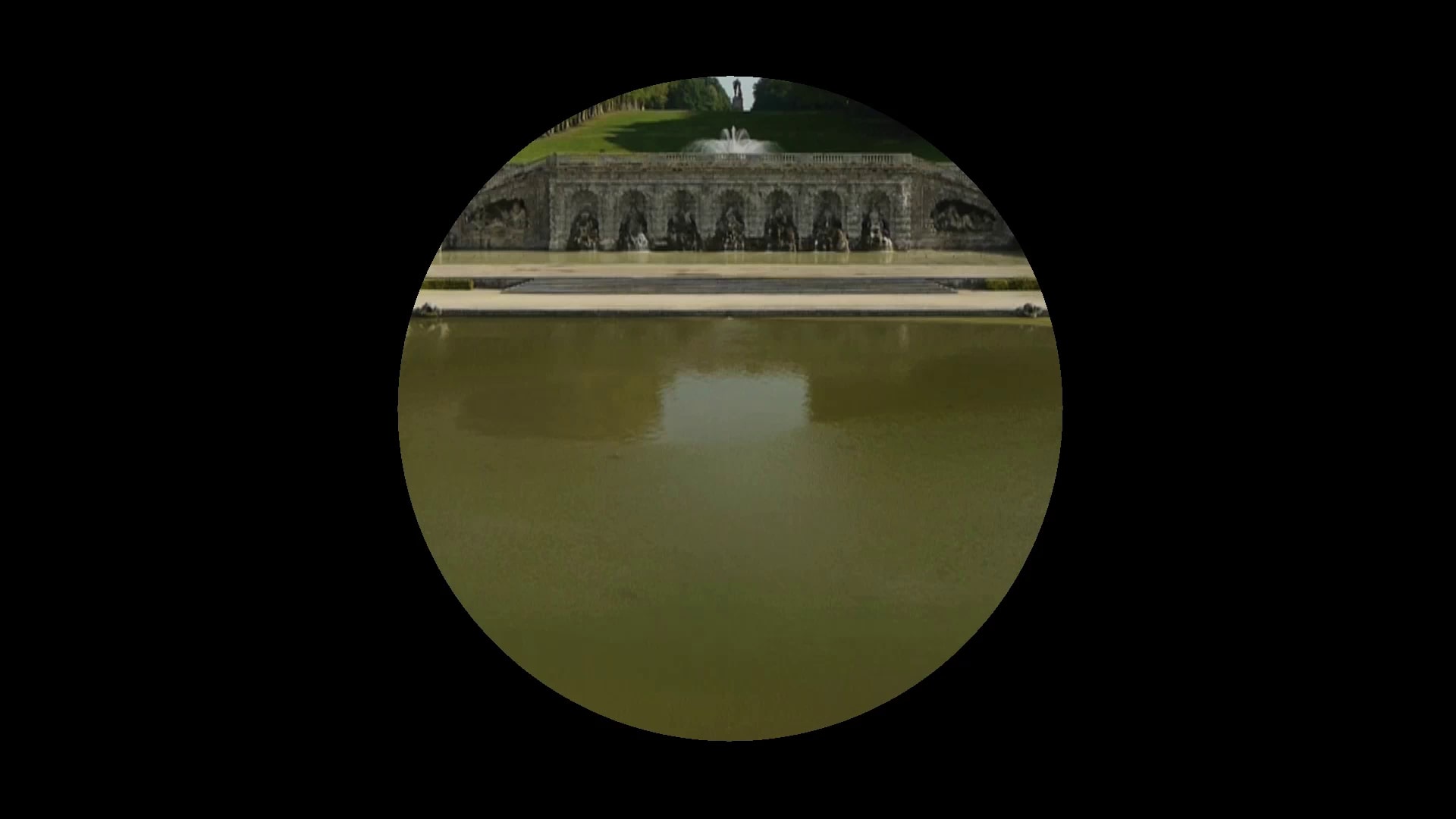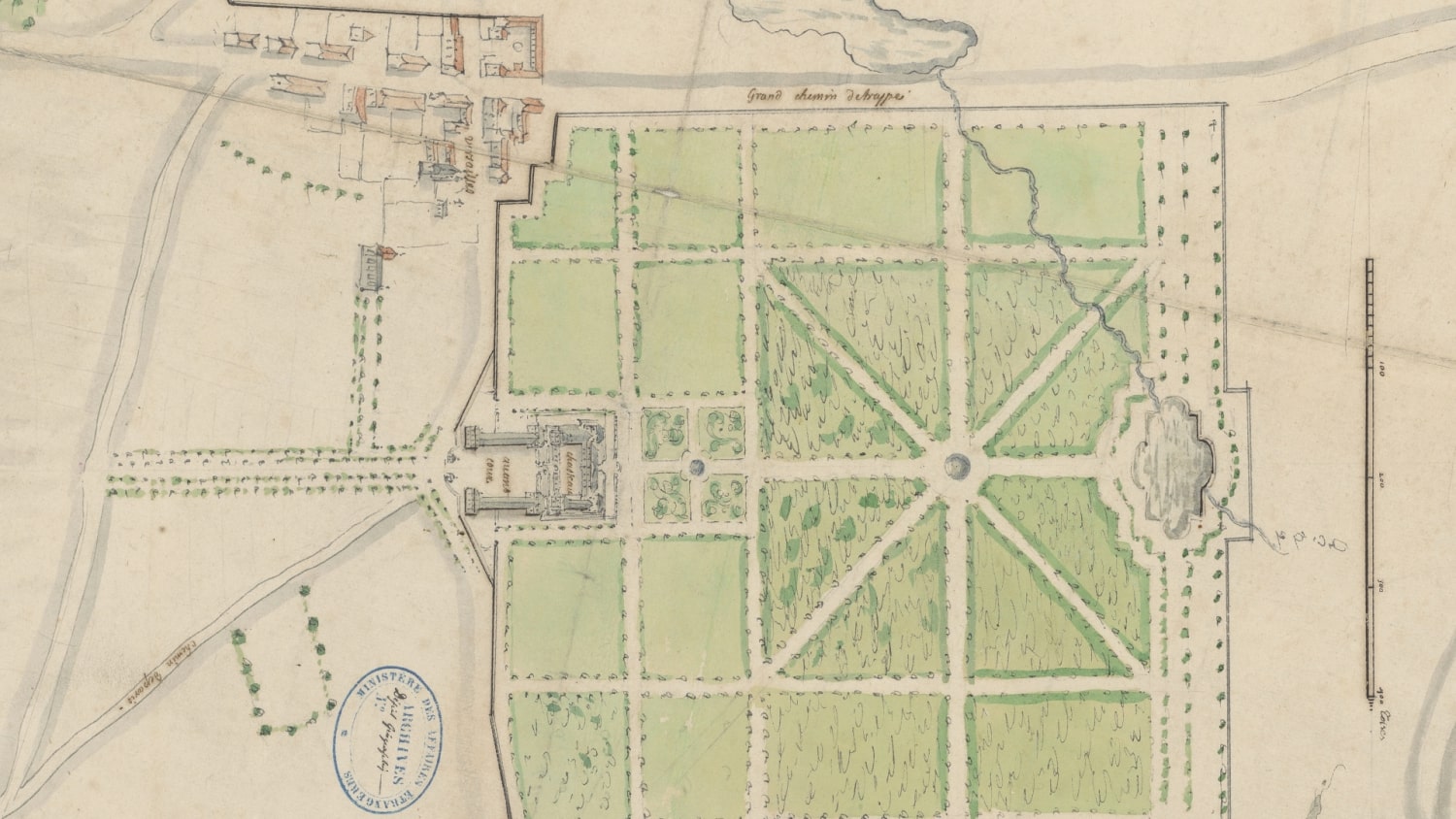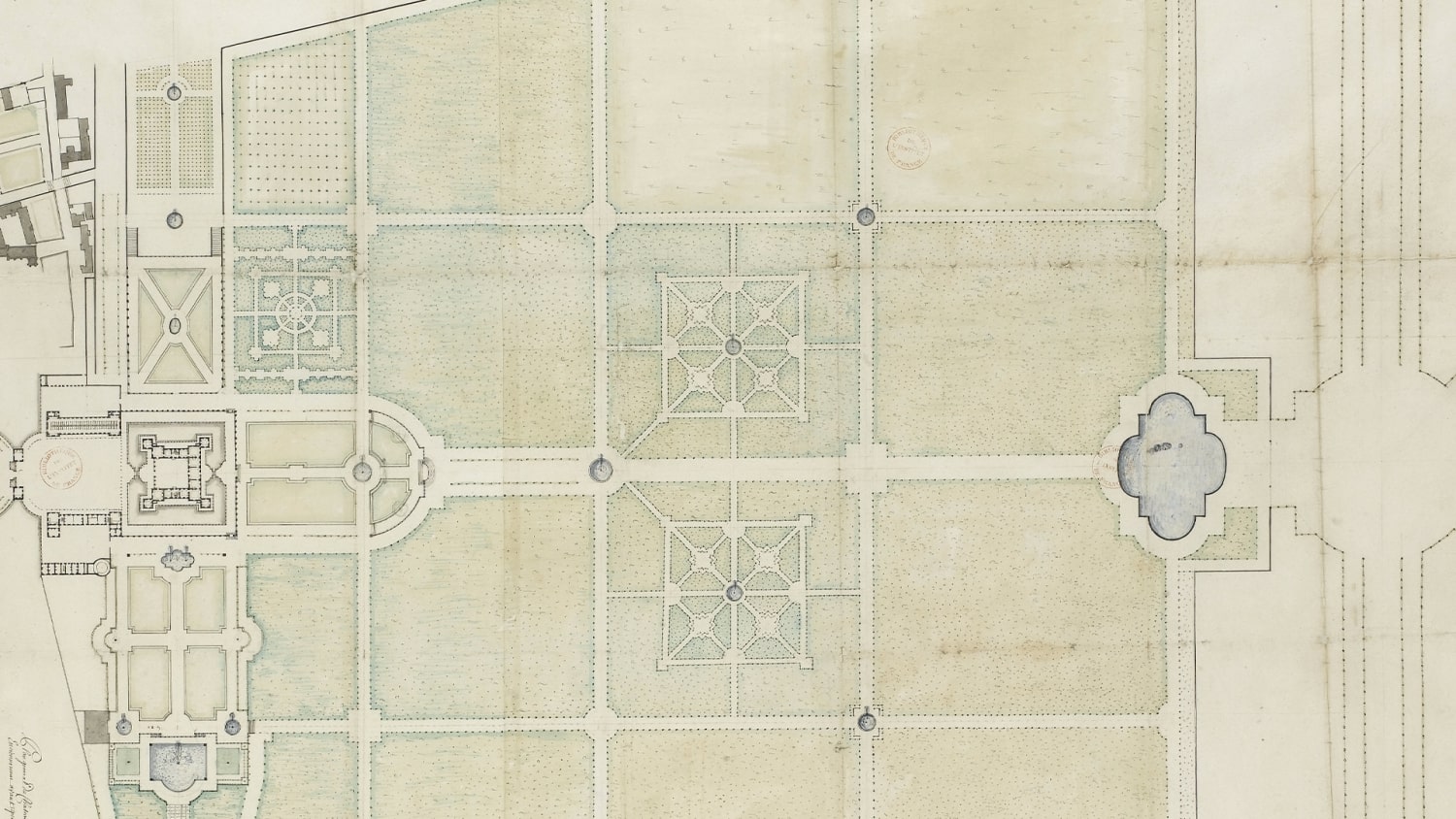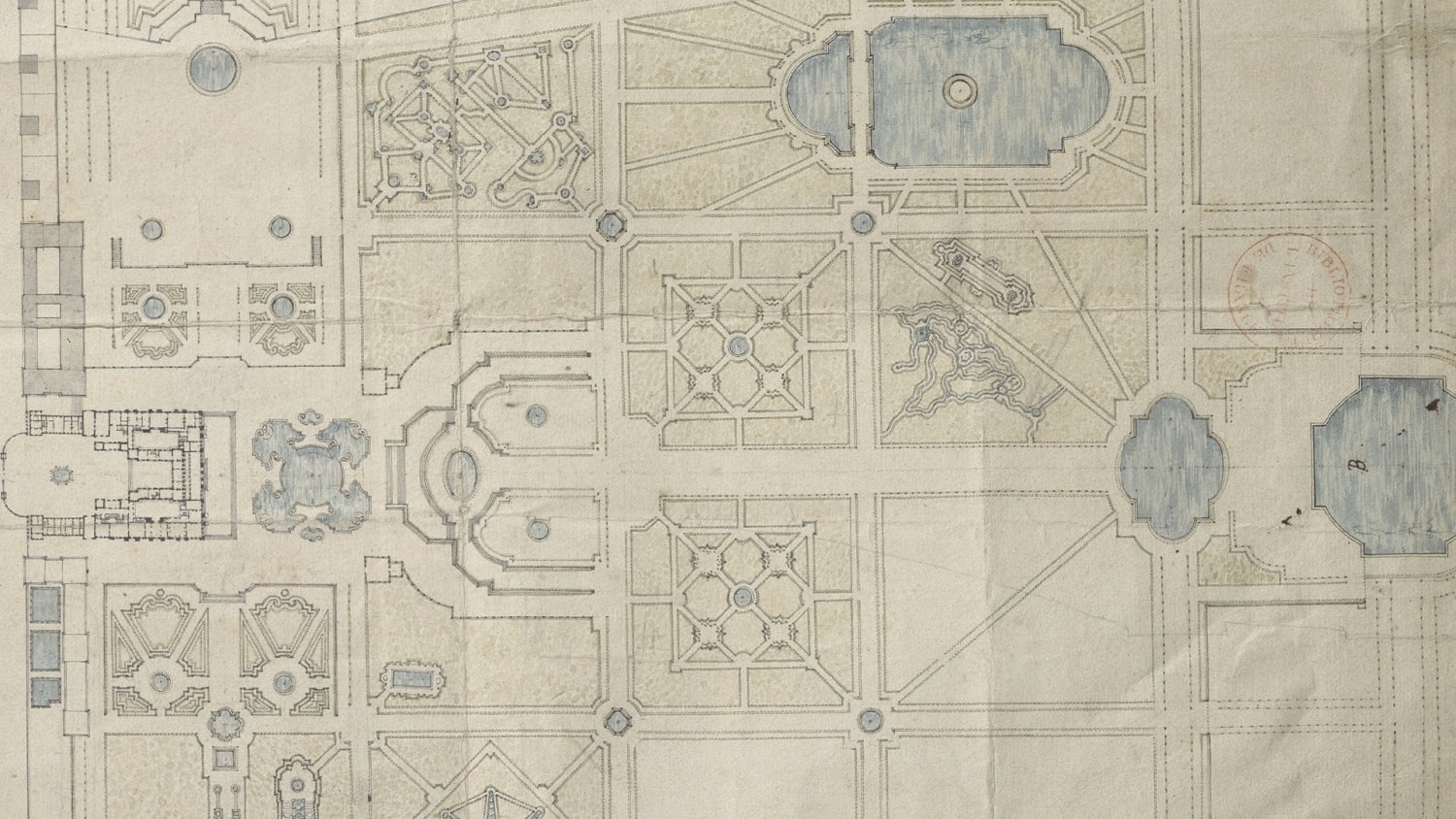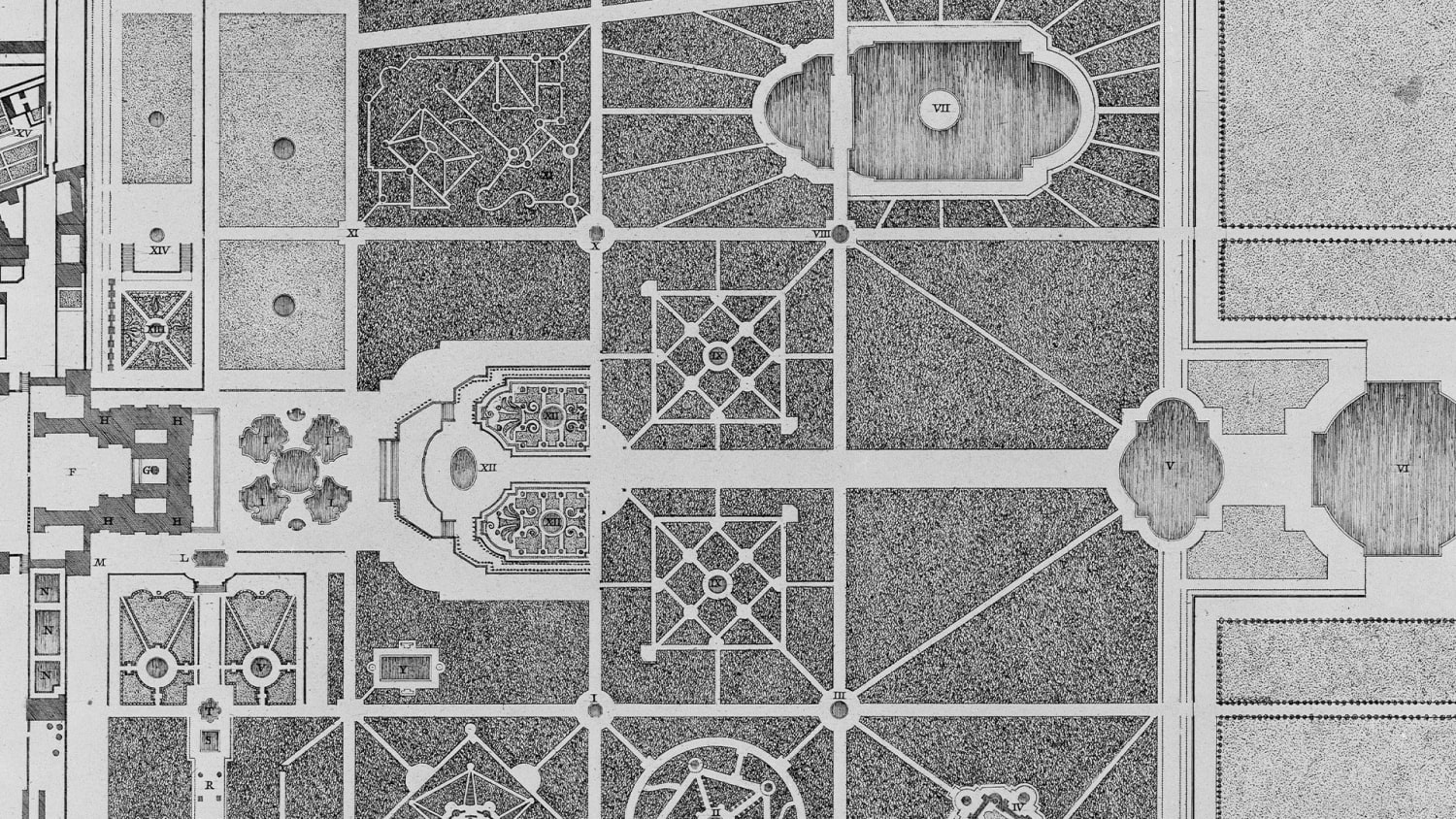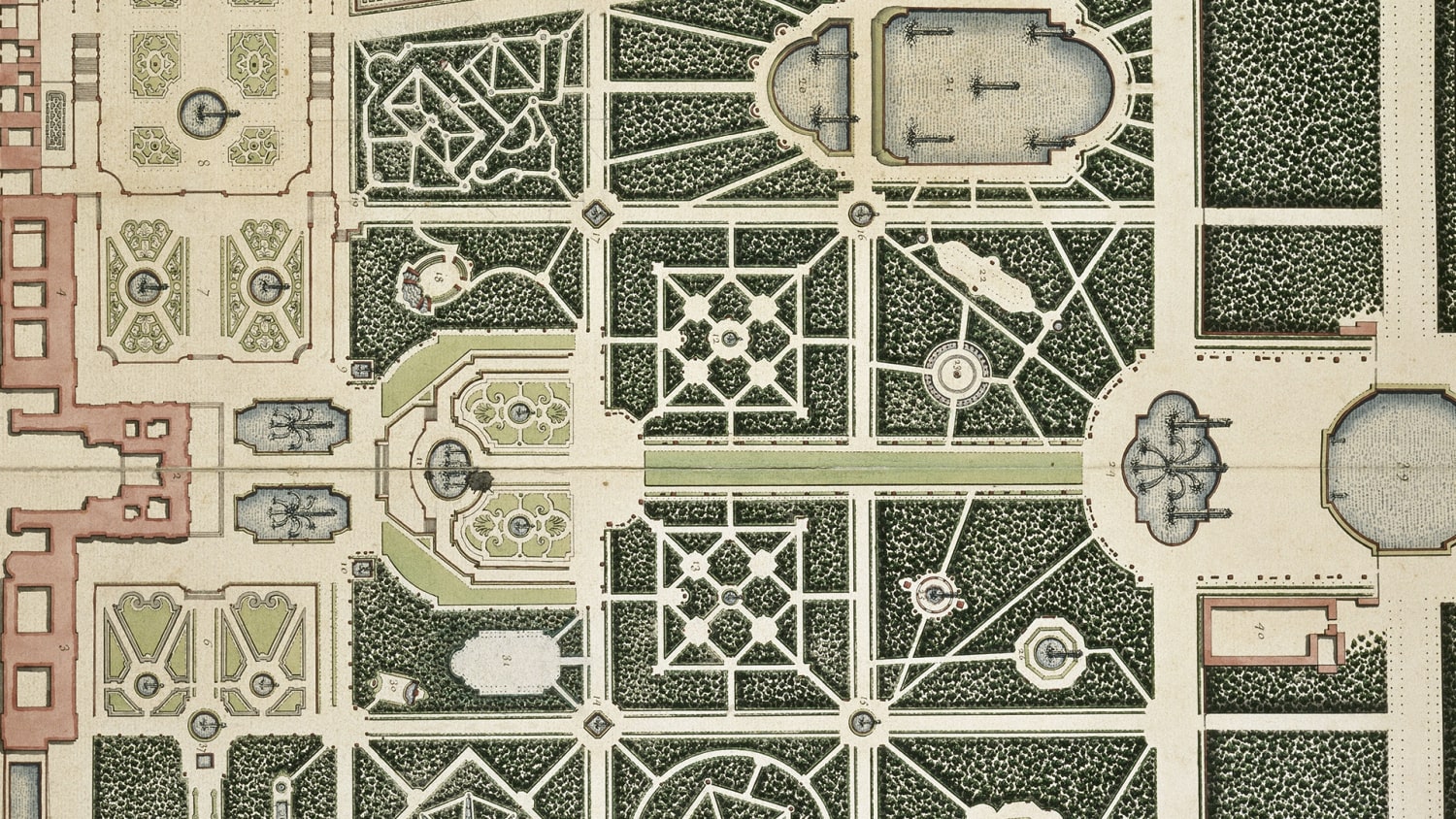Louis XIII becomes King of France.
12 March 1613: André Le Nôtre is born in Paris, at the Tuileries, into a family of royal gardeners and garden designers.
1629-1635: André Le Nôtre studies under Simon Vouet, First Painter to Louis XIII.
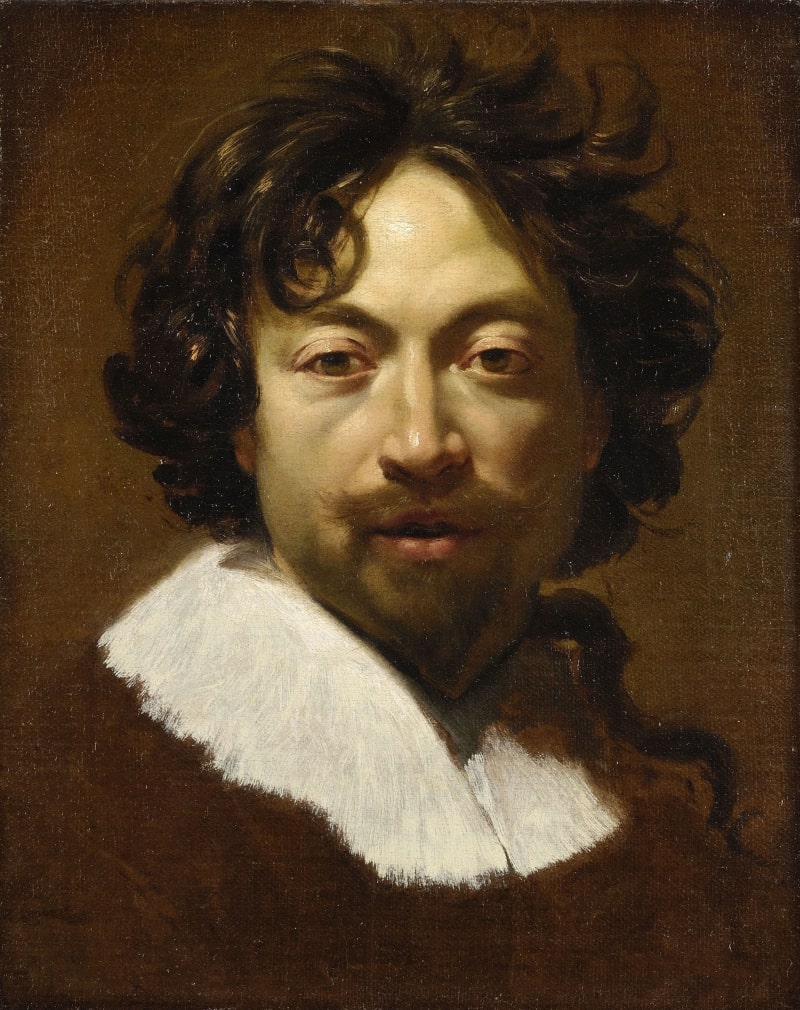
Self-portrait, Simon Vouet
Circa 1626-1627, Musée des Beaux-Arts de Lyon
Simon Vouet was a highly-renowned painter when he returned from Italy in 1627. He was summoned by Louis XIII, and became First Painter to the King, with lodgings and a studio below the Grande Galerie at the Louvre. He trained young artists in this studio, which was one of the most famous of the era. Le Nôtre spent approximately five years studying there and honed the drawing skills which he had learned from his father.
Le Nôtre becomes head gardener to Gaston d’Orléans, brother of Louis XIII. He is responsible for the gardens at the Château de Blois, Château de Chambord, and the Luxembourg Palace.
He succeeds his late father as the King’s gardener.
André Le Nôtre marries Françoise Langlois with whom he has at least three children, who die in infancy. He meets Nicolas Poussin in this year.
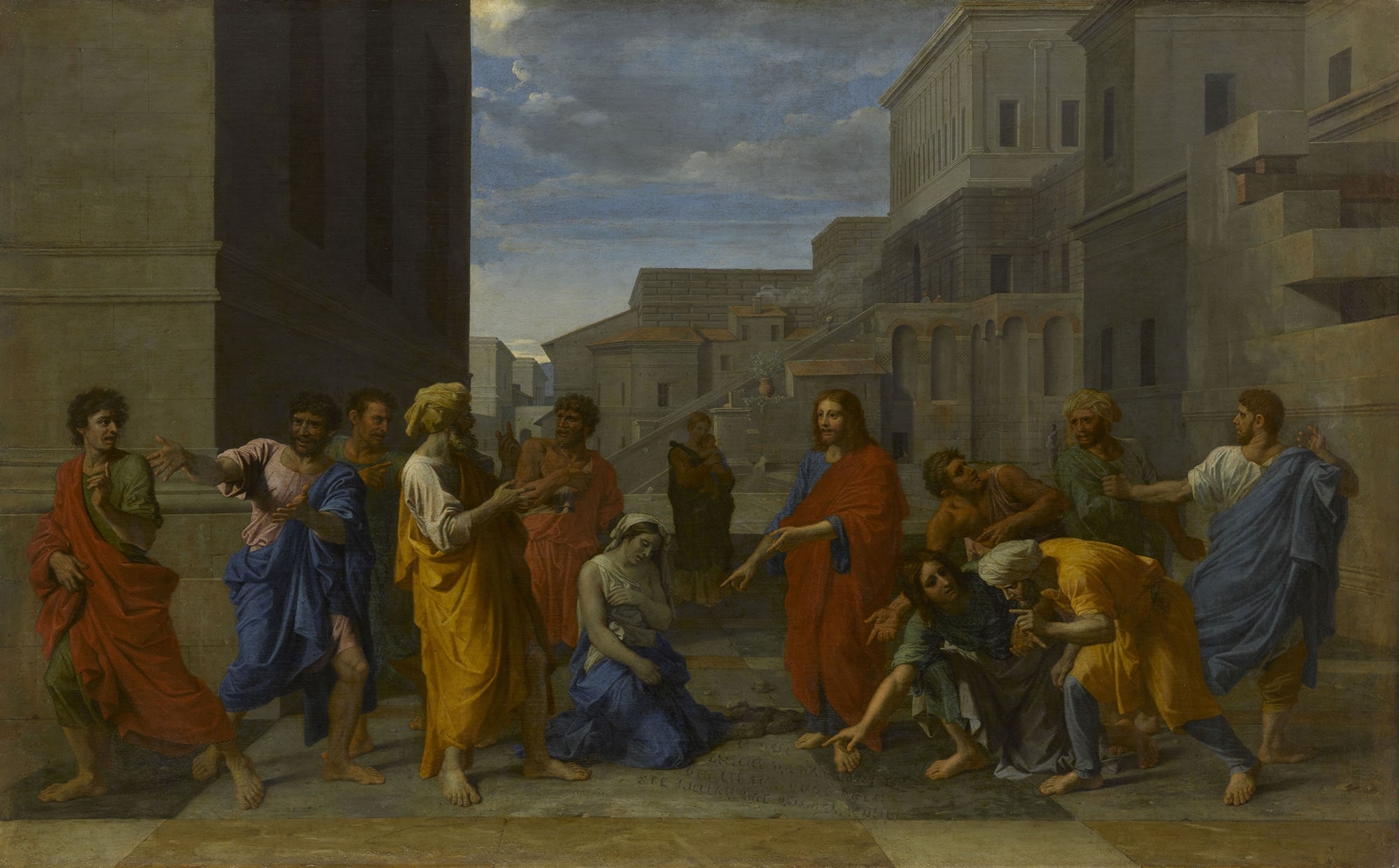
Christ and the Adulteress, by Nicolas Poussin
1653, Musée du Louvre, Paintings Department
Le Nôtre commissioned Christ and the Adulteress from Nicolas Poussin in 1653. The painting depicts an episode on the theme of forgiveness in which Jesus saves the kneeling woman from being stoned. This masterpiece is indicative of the overall quality of André Le Nôtre’s collection. The gardener knew the famous painter Nicolas Poussin when he was living in Paris.
Death of Louis XIII, Louis XIV becomes King of France.
André Le Nôtre becomes the king’s draughtsman.
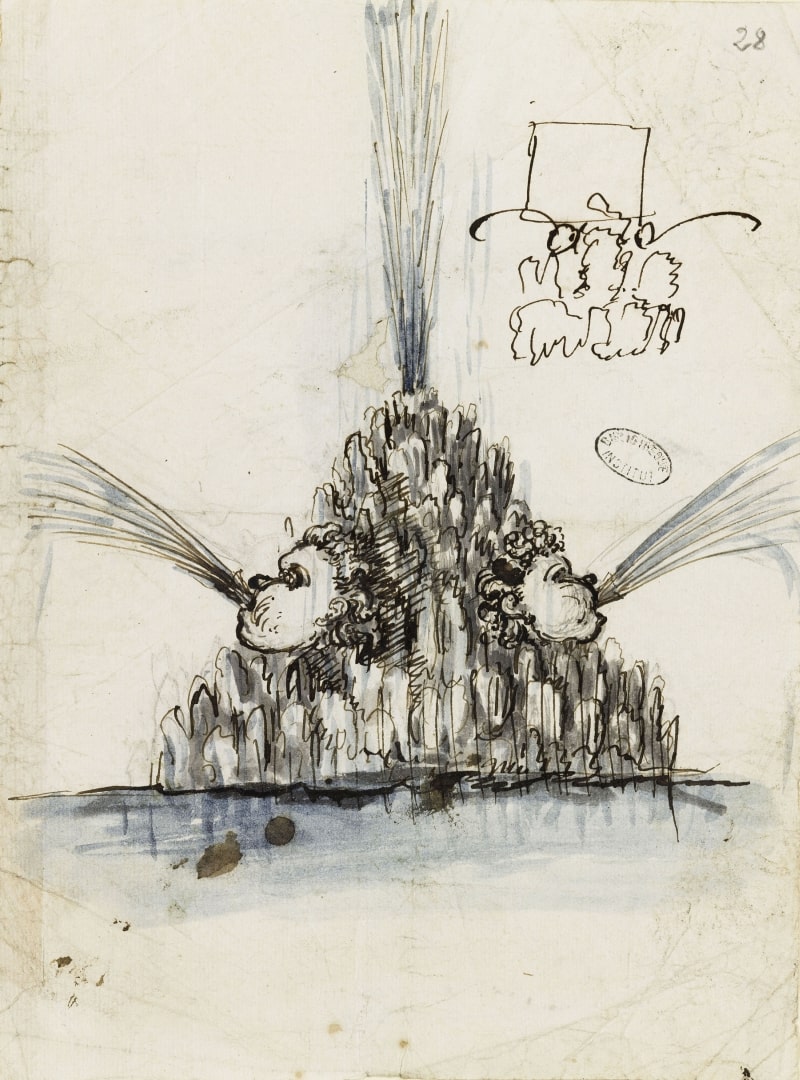
Sketch for a fountain, by André Le Nôtre
17th century, Bibliothèque de l'Institut de France, Paris
Le Nôtre was skilled draughtsman and hydraulic engineer. In this drawing, there is an impromptu sketch of a figure next to a quickly drawn idea for fountain.
He redevelops the Queen’s Garden at Fontainebleau.
The project at Vaux-le-Vicomte begins in earnest and establishes André Le Nôtre’s reputation internationally. He has been an advisor to Nicolas Fouquet since 1640, and designed the gardens and grounds.
Le Nôtre becomes the king’s counsellor and Controller General of the King’s Buildings, Gardens, Arts and French Manufactories.
In June, he completes the world’s largest parterre, the Tiber parterre at Fontainebleau.
Nicolas Fouquet is arrested on 5 September after the grand festivities at Vaux-le-Vicomte on 17 August.
From 1661 to 1662: André Le Nôtre is tasked by Louis XIV with beginning the initial work on the estate at Versailles. He remodels the space around a double east-west and north-south axis and redesigns terraces, parterres and groves, transforming it into a masterpiece of balance and fantasy.
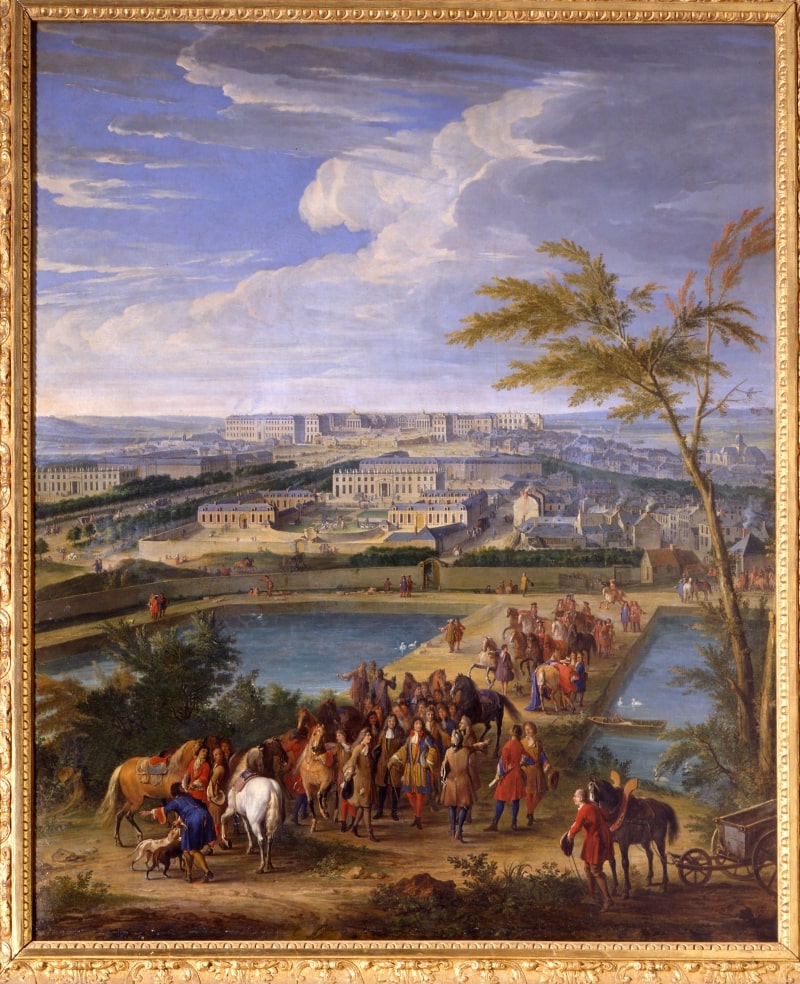
Perspective view of the Town and Palace of Versailles from the Butte Montbauron, by Jean-Baptiste Martin the Elder
Circa 1690, Palace of Versailles
This perspective view of the gardens of Versailles showcases the main elements of a French formal garden. Le Nôtre uses pre-existing features but completely transforms them: the terraces are expanded and the parterres are extended. Avenues and paths stretch into the far distance. Fountains, canals, groves and statuary structure the different areas of the garden.
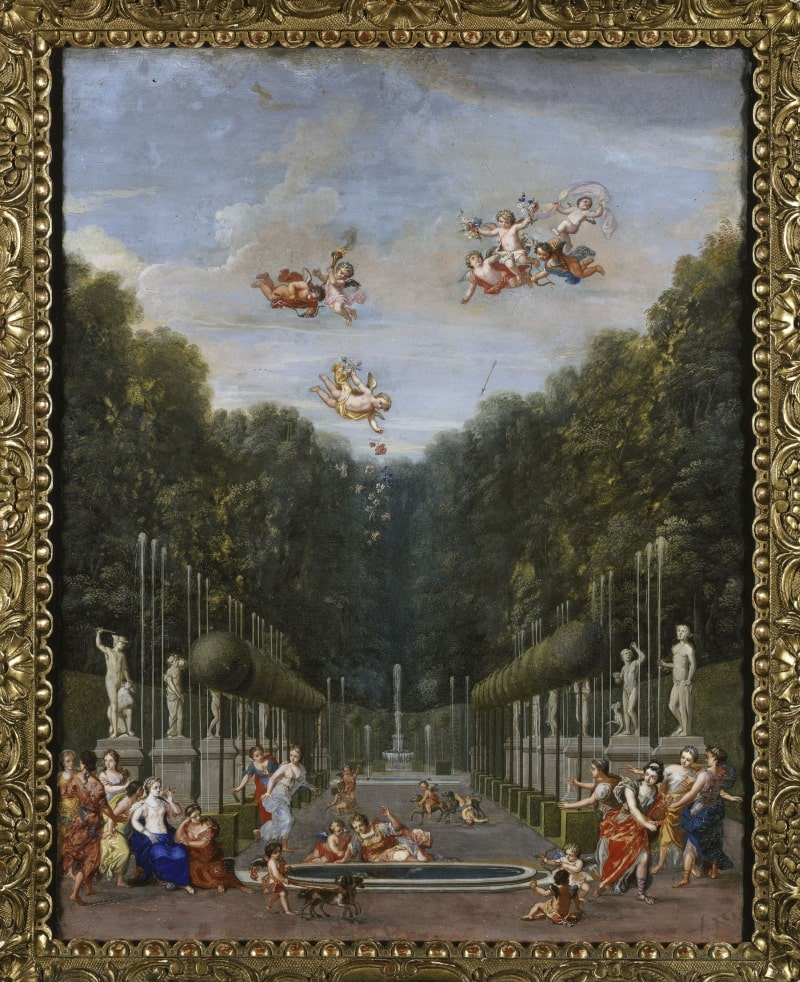
Antiquities Gallery or Water Gallery with Narcissus Admiring his Reflection in a Pool, by Jean Joubert
17th century, Palace of Versailles
The groves created by Le Nôtre are sheltered from prying eyes by dense masses of greenery and trees. On entering these enclosed spaces, curiosity turns into wonderment. This is the effect sought in the Room of Antiquities: beyond the fountain, on either side of the path, are orange trees, water jets and 24 ancient statues.
In the 17th century, André Le Nôtre’s gardens were populated with statues. These original works by his contemporaries or copies of works from Antiquity were often mythological, but also reflected the discovery of new continents.
André Le Nôtre and Bernini meet several times.
1665- 1699: In parallel with work at Versailles and royal residences (Vincennes, Fontainebleau, Tuileries, Saint-Germain-en Laye, Trianon, Marly, etc.), the king’s gardener is in demand for many other projects in France and abroad.
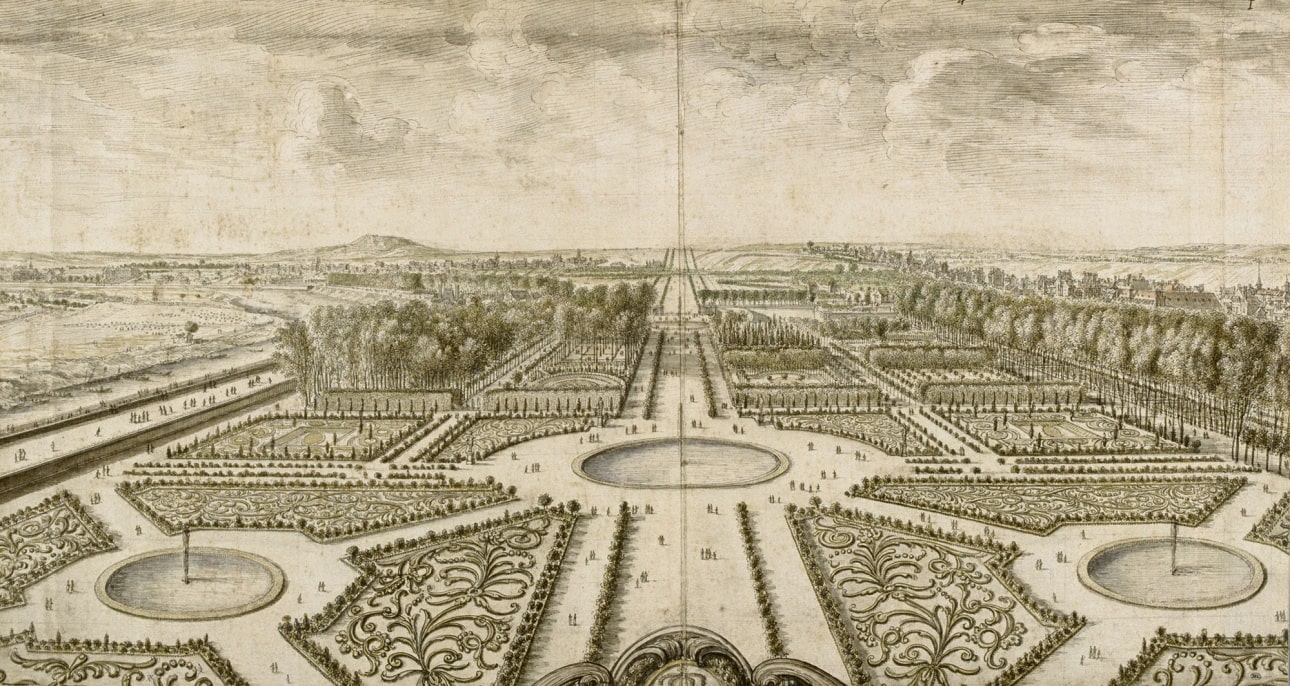
View of the Tuileries Gardens, by Israël Silvestre
17th century, Musée du Louvre, Prints and Drawings Department
The Tuileries Gardens, which are the cradle of French gardens, and also of the Le Nôtre family, were redesigned by André Le Nôtre between 1665 and 1679. He created a central path in alignment with the palace, and levelled and raised the ground to create the Waterside terrace and the palace terrace. The main path, with a pool at either end, was extended by a horseshoe-shaped structure, and in the distance by the avenue leading to Saint-Germain, which would later become the avenue des Champs-Elysées.
His projects include: Saint-Cloud for Philippe d’Orléans, Chantilly for the Prince de Condé, Anet for the Duc de Vendôme, Clagny for Madame de Montespan, Maintenon and Saint-Cyr for Madame de Maintenon, and Meudon for the Marquis de Louvois.

The Marquis de Louvois and his Wife Hunting at Meudon, by Adam-Frans Van der Meulen
17th century, Palace of Versailles
Le Nôtre began landscaping the garden of the Château de Meudon, near Versailles for Louvais in 1679, creating pools, groves and parterres. Louis XIV wrote Manière de montrer Meudon, a guide to visiting the gardens modelled on the text he wrote for Versailles: "You must arrive down the Avenue, and then drive along the superb Terrace, before arriving in the Courtyard, where you step out of your carriage."
Le Nôtre also worked on the project at Sceaux for Jean-Baptiste Colbert, at Greenwich for Charles II of England, at Windsor, and lastly at Racconigi and Venaria Reale in Italy for Charles-Emmanuel II and then Victor-Amadeus II of Savoy.
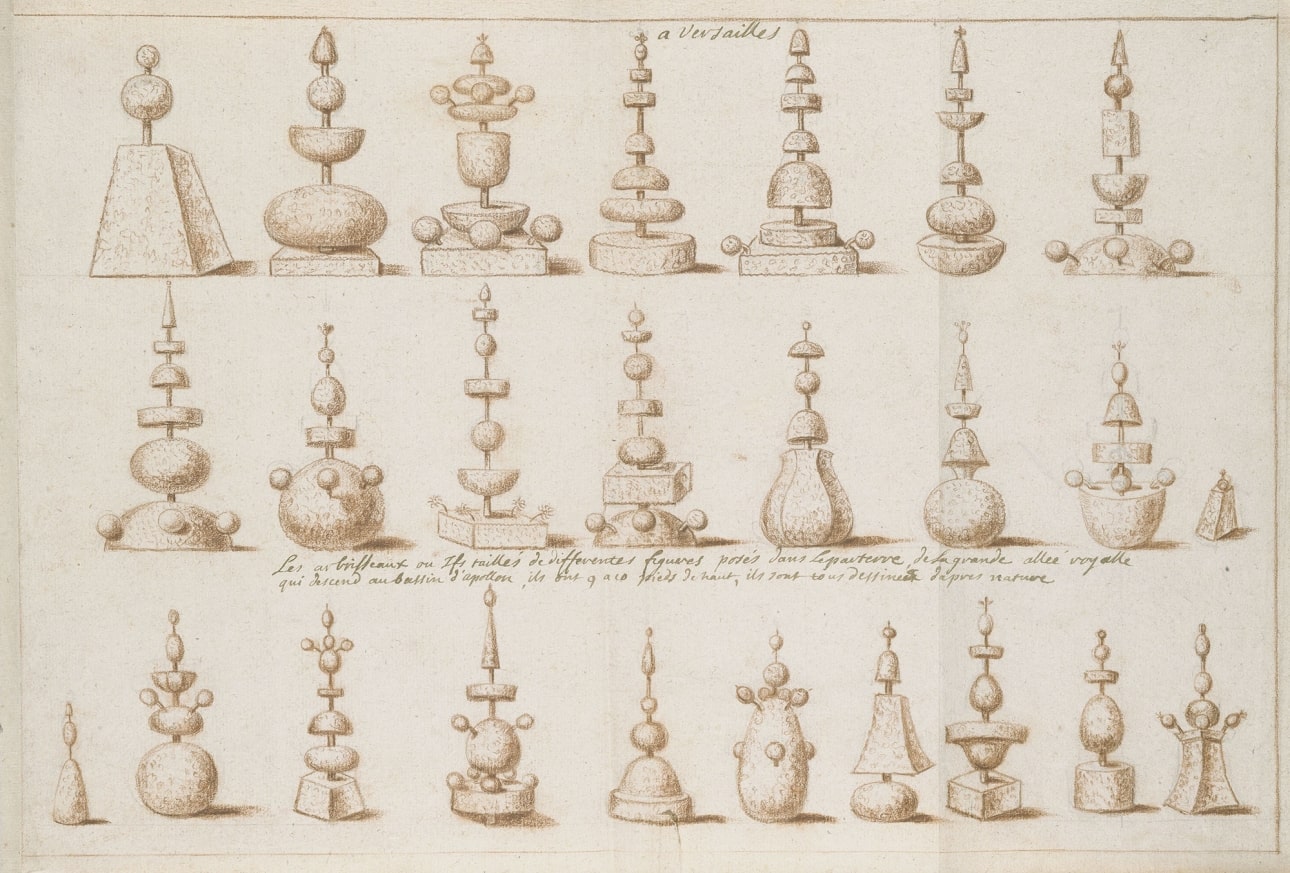
Examples of topiary designs in “Decoration for interiors and gardens from Versailles and other places”, Anonymous
Early 18th century, Palace of Versailles
The art of topiary consists of shaping and pruning shrubs into a form of plant sculpture. The Romans were the first to practise this art and it came back into vogue during the Renaissance. This taste for topiary elements lasted until the 17th century and was an integral part of formal gardens. Le Nôtre expanded and varied the repertoire of shapes, thus transforming topiary into an artform in its own right.
André Le Nôtre is ennobled by Louis XIV.
Le Nôtre travels to Italy (from late April to late November).
On his return, he is showered with honours, and is appointed .
He receives the and now regularly attends sessions at the Royal Academy of Architecture.
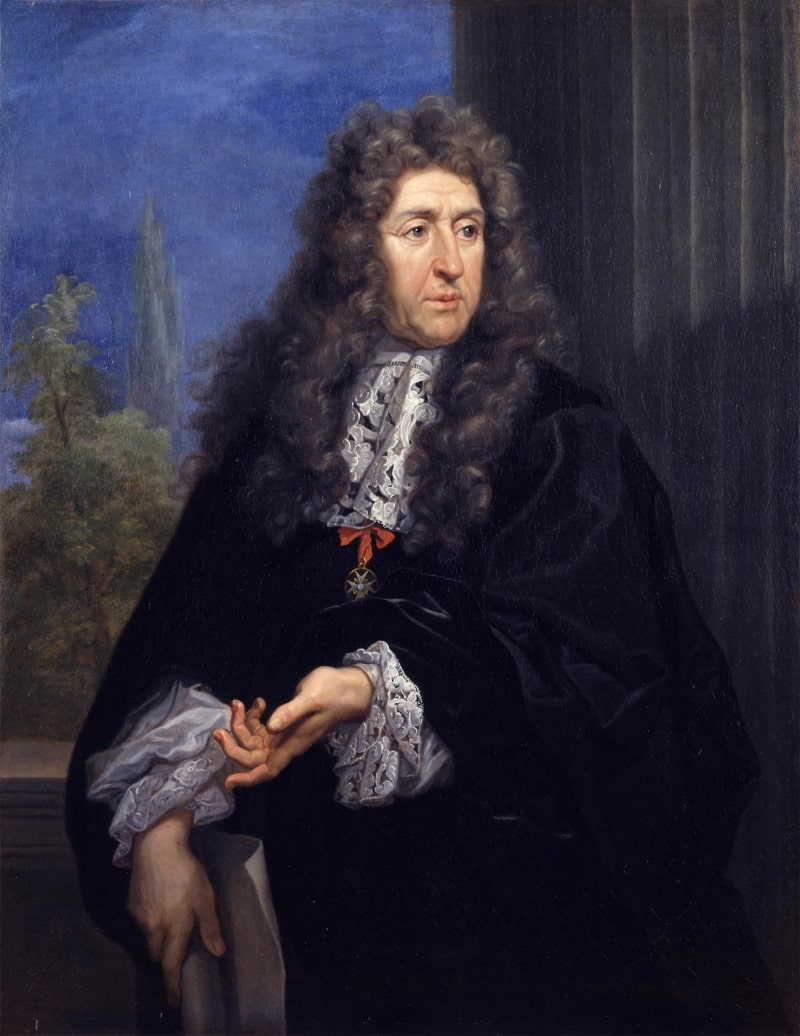
André Le Nôtre (1613-1700), Controller of Buildings and Designer of the King’s Gardens, Carlo Maratta
1679-1681, Palace of Versailles
This painting is one of the small number of portraits of Le Nôtre. It is an official portrait in muted tones in which he is partially silhouetted against a wooded landscape. Le Nôtre is shown off to best advantage due to his position in the centre of the painting and his bright red ribbon. It is the cross of the . This prestigious distinction was awarded to Le Nôtre by the king.
André Le Nôtre is awarded the Order of Saint-Michael. The artist, a great aesthete and collector, gifts the king the most prestigious items from his collection.
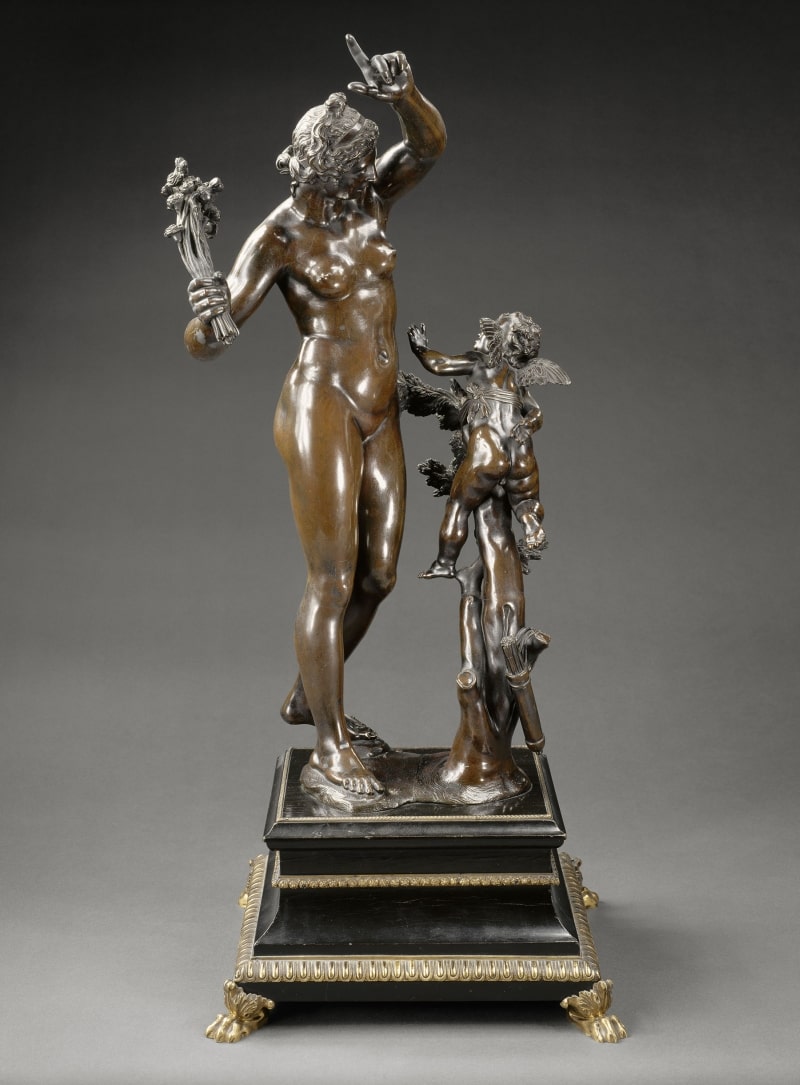
Venus Scolding Love, Giovanni-Francesco Susini
1639, Musée du Louvre, Department of Objets d'art
Le Nôtre had a very keen interest in sculpture as is demonstrated by his collection of small bronzes, which was remarkable both in terms of quantity (129 in total) and quality. Over a third of his groups and figures represented gods and heroes of Antiquity. However, he did not own any antiquities and preferred modern pieces made in the 16th and 17th centuries.
15 September 1700: André Le Nôtre passes away at his home in the Tuileries in Paris, aged 87. His unique legacy in France and abroad lives on and still has a profound impact on theorists, garden designers and town planners to this day.
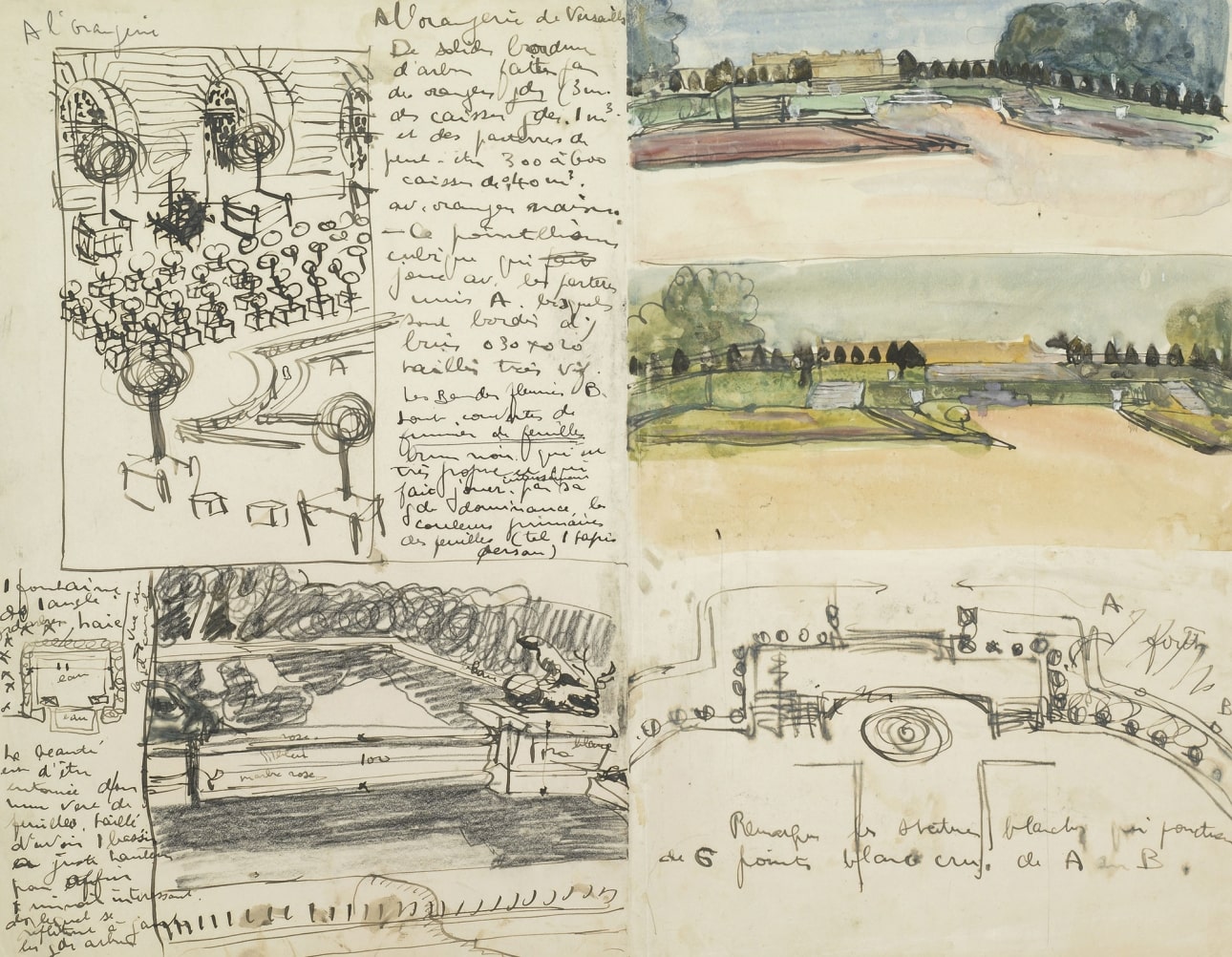
Villa Church, Ville-d’Avray, 1927-1929, by Le Corbusier and Pierre Jeanneret
1927-1929, Fondation Le Corbusier, Paris
This architectural drawing depicts the first version of the parterre of Villa Church, built between 1927 and 1929 by Le Corbusier and Pierre Jeanneret in Ville-d’Avray, between Paris and Versailles. Le Corbusier designed a variation on the embroidery-style parterre by setting clipped shrub beds – beloved of Le Nôtre – into the paving slabs of the ground-floor terrace.
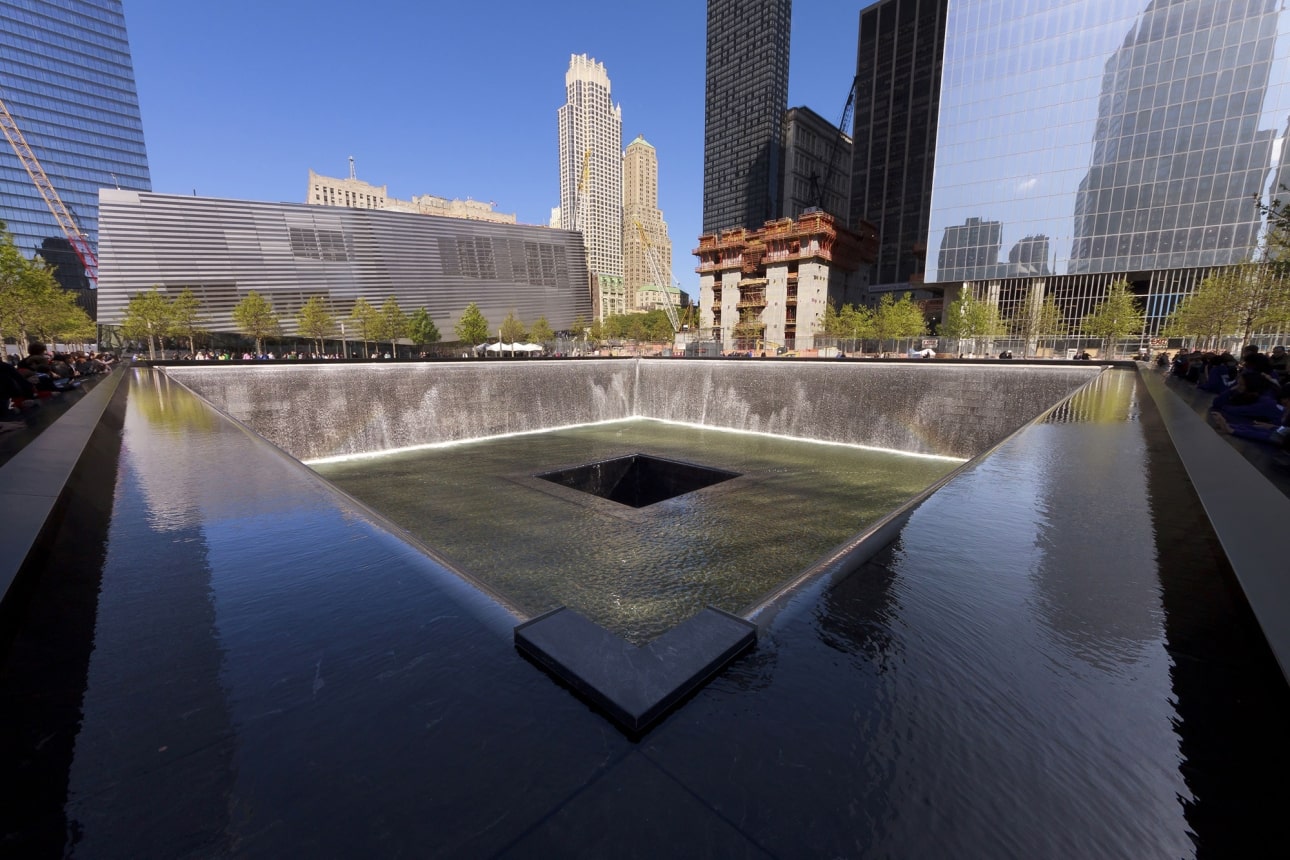
Photograph of the National September 11 Memorial in New York, by Peter Walker Partners (PWP) Landscape Architecture
21st century, Peter Walker Partners (PWP) Landscape Architecture
Minimalism was an artistic movement in the 1960s. It had a profound influence on the practice of certain contemporary landscape gardeners and their interpretation of Le Nôtre’s gardens. Peter Walker, the landscape architect tasked with creating the National September 11 Memorial in New York, created two huge voids representing the absence of the missing towers. The water all around them forms a cascade and seems to disappear into the depths of the city, as if into a bottomless well.
1 September 1715: death of Louis XIV.



